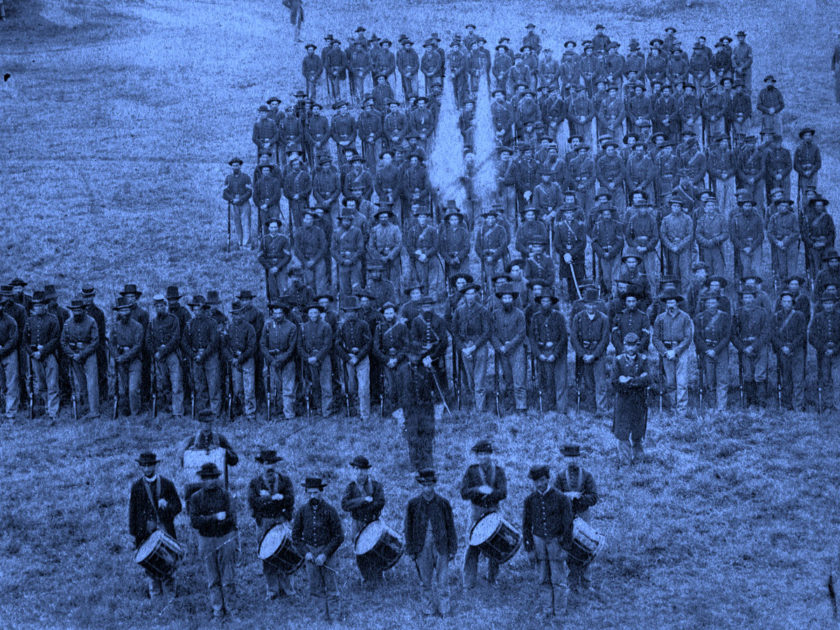Introduced by Austin Sundstrom and featuring portraits from the image collecting community
Illinois is often overlooked when it comes to contributions during the Civil War. The state possessed two important transportation hubs: Chicago, on Lake Michigan, and Cairo along the Mississippi River. It was also a major supplier of food for the war effort with slaughterhouses in Chicago and farmers growing wheat and corn.
Illinois provided nearly 285,000 men for the war effort, placing it fourth among all Union states with only Ohio, Pennsylvania and New York sending more volunteers. These Illinoisans, a significant number who had migrated from the East as part of the country’s western expansion, played major roles in both theaters of war. The 8th Illinois Cavalry fired the first shots at Gettysburg. The 45th Illinois Infantry became the first regiment to enter the city of Vicksburg and raise the flag over the old courthouse. The 19th Illinois Infantry charged across frigid Stones River on a cold January afternoon with bayonets affixed, helping to break the Confederate advance outside Murfreesboro.
In the Western Theater, southern Illinois and Cairo emerged as critical staging points for the Union war effort and as a hub for the Brown Water Navy.
Politically, Illinois also played an important leadership role in and after the war. President Abraham Lincoln navigated uncharted waters to defeat the insurgent rebels and bring an end to slavery, which had plagued the republic since its founding. Major General John A. “Black Jack” Logan, as second Commander-in-Chief of the Grand Army of the Republic, helped create Decoration Day, now known as Memorial Day.
These factors and others make Illinois a fascinating and worthy state to study. The images here are representative of the service and sacrifice of all the sons of Illinois.
1861
Horses at Camp Hunter
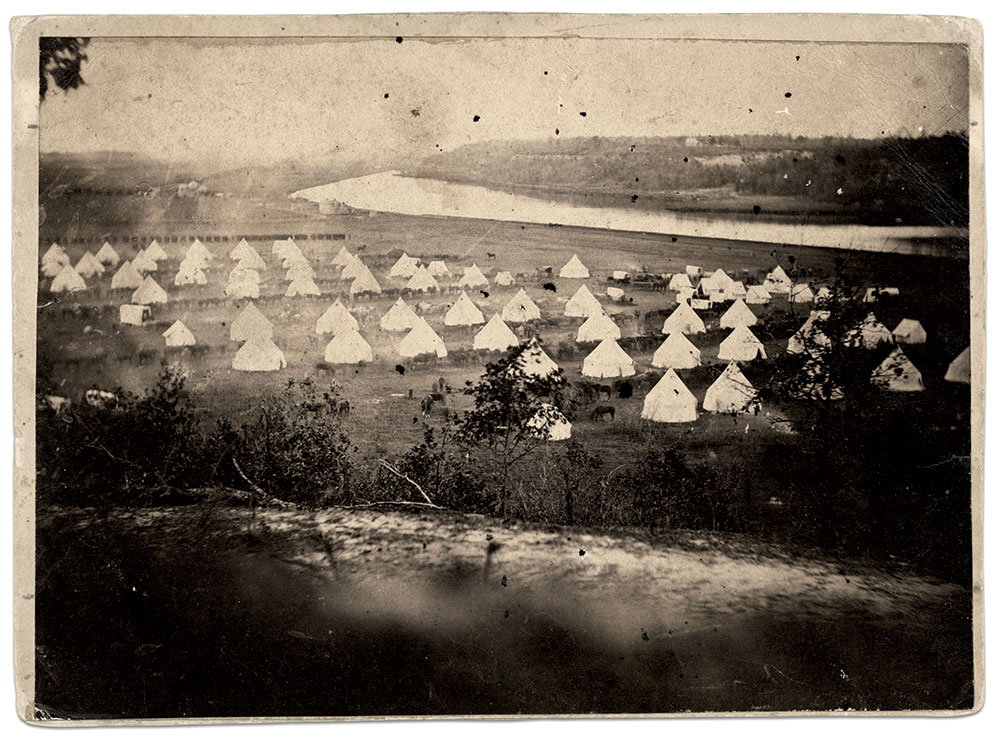
In August 1861, a correspondent described Camp Hunter as one of the best camping grounds in the state. Situated at the confluence of the Illinois River and Crow Foot Creek near Ottawa, it offered clean water and open spaces. Named for Maj. Gen. David Hunter, who had been wounded at the recent Battle of Bull Run and was a confidant of Abraham Lincoln, the camp served as home to Col. Theophilus Lyle Dickey’s Cavalry Regiment, which mustered into the army as the 4th Illinois Cavalry. A steady supply of horses arrived in camp during the first summer of the war. You can see them between rows of tents. Ottawa, two-and-a-half miles away, served as a receiving point for horses from across the region to the delight of local equine enthusiasts. “Everybody is over the river trying the horses by taking a ride on one of them to Camp Hunter and back,” noted the Ottawa Free Trader in September. In early November, after six weeks in camp, officers and men rode off for service in the Western campaigns, including Forts Henry and Donelson, Shiloh and Vicksburg. The 4th mustered out in November 1864.
Ten Regiment Act
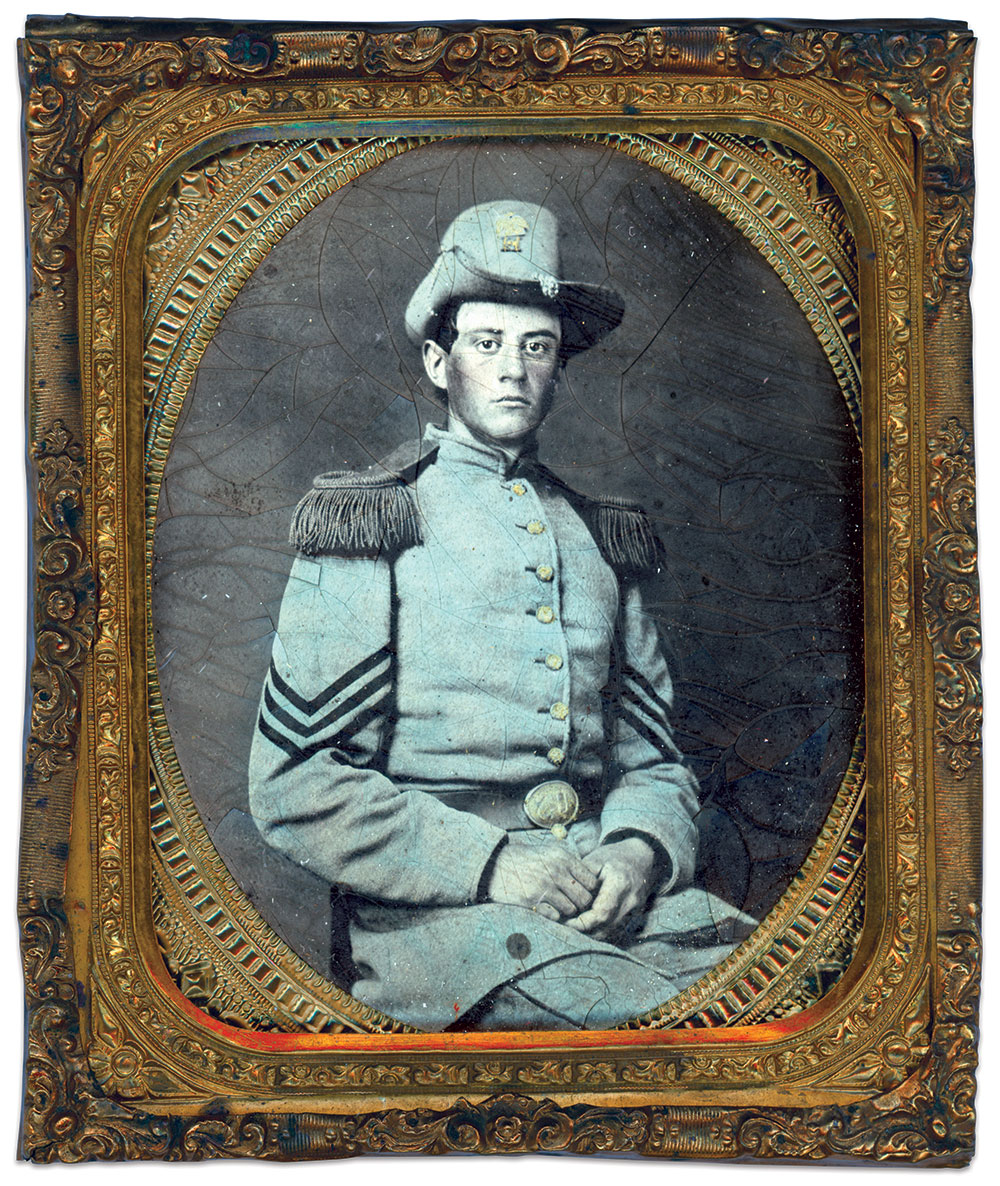
Illinois legislators acted quickly to mobilize for war. One of their early actions, the Ten Regiment Act, established a framework to recruit volunteers. One of them is pictured here: Charles W. Thompson, a New York native who settled in Polo, Ogle County, in the 1850s. He mustered into the 15th Illinois Infantry in May 1861. He wears a distinctive frock coat trimmed with light blue epaulettes and a matching hat with red, white and blue cord. Thompson’s service ended less than a year after he posed for this portrait when he suffered wounds at Shiloh. He succumbed to them on April 12, 1862. A cenotaph in Polo memorializes his life and sacrifice.
A Chicago Light Infantryman
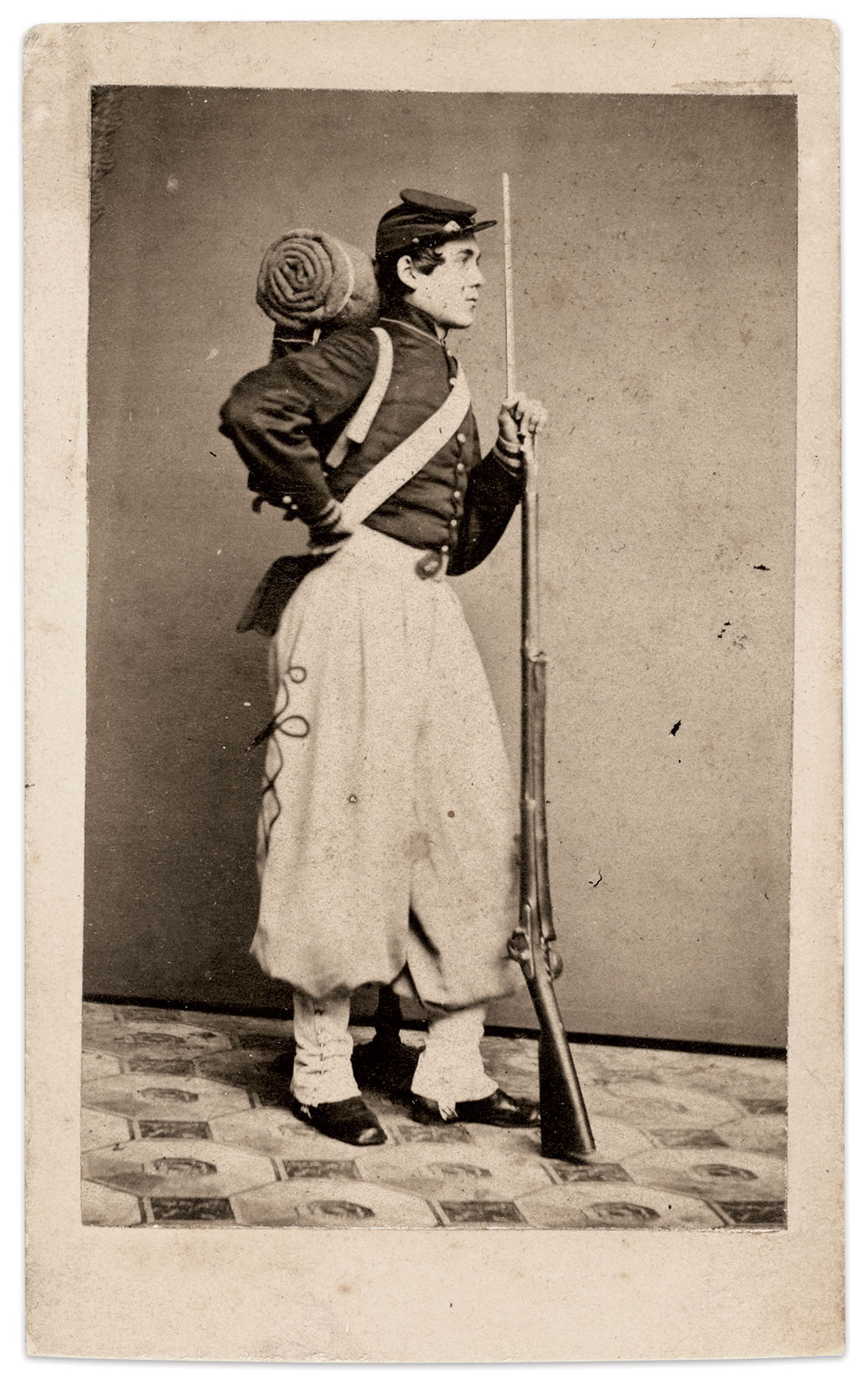
Al Niemiec Collection.
In the immediate aftermath of the Fort Sumter bombardment, loyal states scrambled to form military organizations. The Chicago Light Infantry is recognized as one of the first in the city to mobilize. The company wore a Zouave uniform. This organization went on to become Company D of the 19th Illinois Infantry. The regiment served a three-year enlistment, fighting at Stones River, Chickamauga, Missionary Ridge and in the Atlanta Campaign.
In McArthur’s Highland Brigade
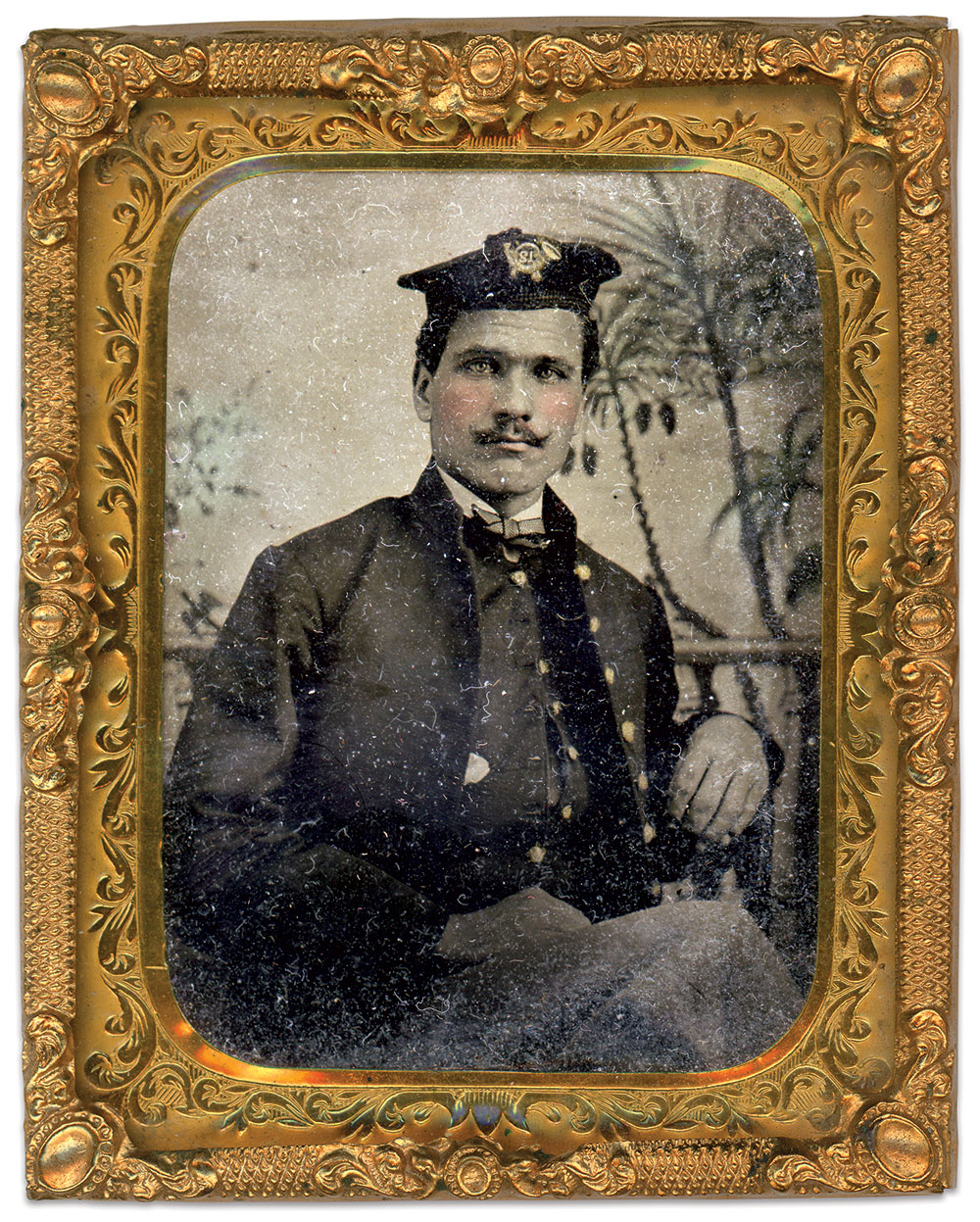
When the First Scotch Regiment formed in Chicago in April 1861, its volunteers wore the traditional bonnets with thistle. The cap is credited to the native Scotsman who formed the regiment and became its colonel—John McArthur. The soldier pictured here is Gustavus Augustus Godat of Company F, a Swiss immigrant. He mustered into the regiment, which became the 12th Illinois Infantry, on May 2, 1861, for a three-month enlistment and returned for a three-year tour, ending the war as a sergeant. Godat lived until 1914, dying in Rio Grande County, Colo., at age 73. His wife, Estelle, and at least seven children survived him.
An Illinois Greyhound and His Colt Revolving Rifle

On Sept. 26, 1862, the 37th Illinois Infantry left Benton Barracks in St. Louis for the South with long arms of various makes. Some 200 men received Colt Revolving Rifles capable of firing multiple shots in rapid succession. About half were distributed to companies A and K, and the remainder to the companies in between. This soldier received one: Wilder E. Wells of Company E. Born in Illinois to parents who hailed from Massachusetts, Wilder resided in Mendota. During his three-year enlistment, the 37th participated in the battles of Pea Ridge and Prairie Grove, the Vicksburg Campaign and other operations. Respected for its combat effectiveness and rapid marches in pursuit of the enemy, the regiment earned the nom de guerre Illinois Greyhounds.Wells survived his service and became a stock dealer in Chicago and Nebraska. He lived until 1913, dying at age 70. His remains rest in Leavenworth National Cemetery.
His Company Captured a Flag at Belmont
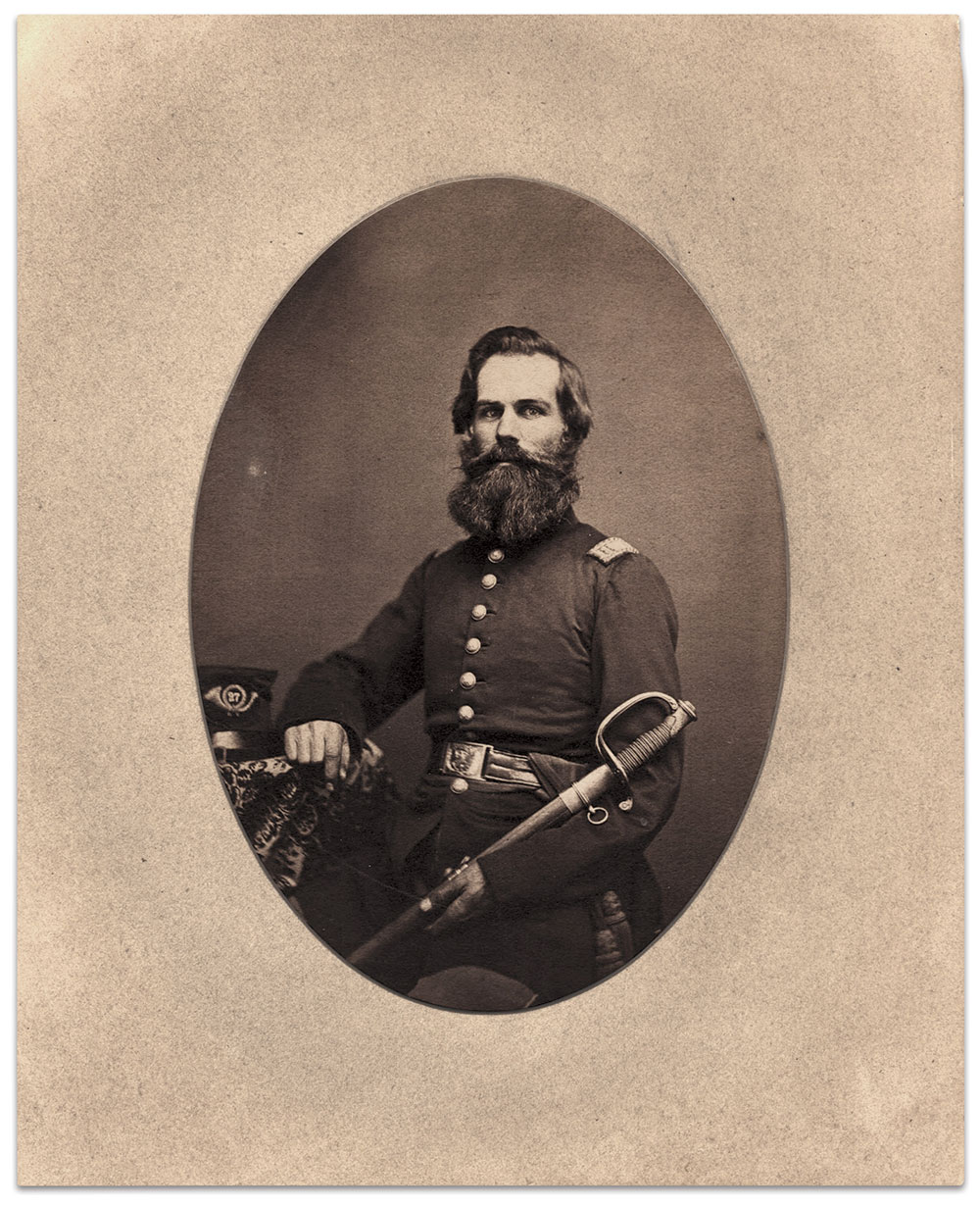
There came a moment during the Battle of Belmont when the 27th Illinois Infantry received orders to advance through enemy abatis and occupy a rebel camp beyond. The Confederate colors floating in the distance proved an irresistible target. Two companies, A and G, led the way, marching in double-quick time and entering the camp simultaneously. Company G was commanded by the captain pictured here, Henry Buchanan Southward. He had the joy of knowing that when all was said and done, one of his lieutenants had possession of the flag. A 34-year-old Ohio native who had settled in New Boston, Ill., in 1856, Southward started his service in August 1861. Belmont marked the first of his many campaigns. Two years later, on Nov. 25, 1863, he fought his last battle along Missionary Ridge, Tenn. On that day, he led the 27th in the breathtaking attack. According to a sketch of his life, “He became so exhausted in the rapid movements in making that grand charge that he remained an invalid for the rest of his life.”
Though the rigors of war limited his physical and mental capacity, it did not prevent him from earning a living as a grocer and raising a family. Upon his death in 1900 at age 73, three children survived him.
One Regiment, Four Senior Officers, Three Survivors
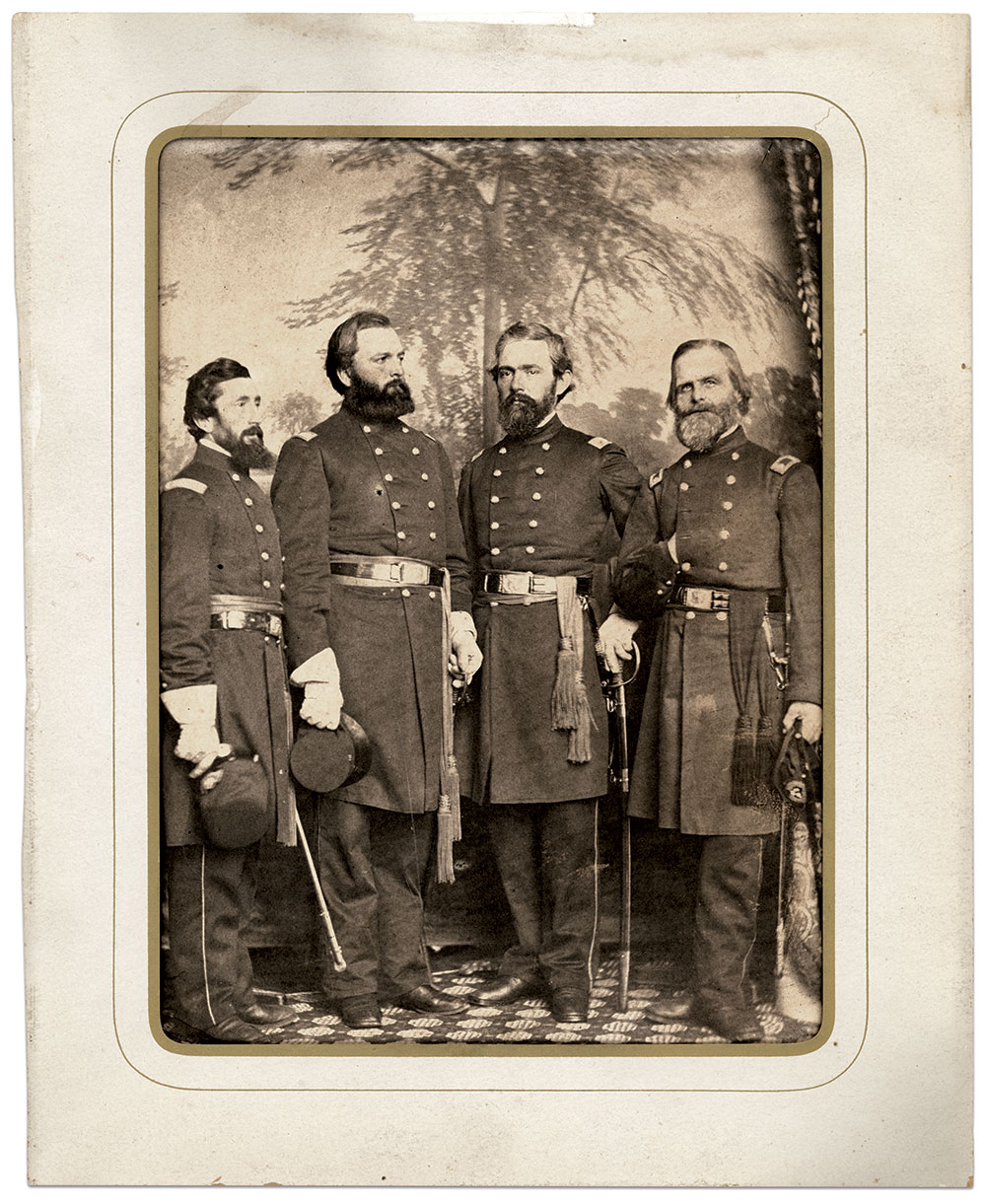
Organized in Galena. Ill., the Washburne Lead Mine Regiment took its name from two natural wonders: Republican Congressman and Lincoln ally Elihu B. Washburne, and the region’s lucrative lead mining industry. The regiment mustered into federal service as the 45th Illinois Infantry, and four of its senior staff posed for this portrait upon its organization in late 1861. One of them did not live to see the end of the war.
From left: Maj. Melanthon Smith (1828-1863) suffered a gunshot to his head during the June 25, 1863, failed assault following the Vicksburg mine explosion; Lt. Col. Jasper A. Maltby (1826-1867), ended the war as a brigadier, became mayor of Vicksburg, and died of yellow fever; Col. John Eugene Smith (1816-1897), ended his war service as a brigadier and brevet major general, and continued his service in the regular army; Surg. Edward D. Kittoe (1814-1887) went on to serve in the U.S. Medical Department and received a colonel’s brevet.
A Northwest Rifleman
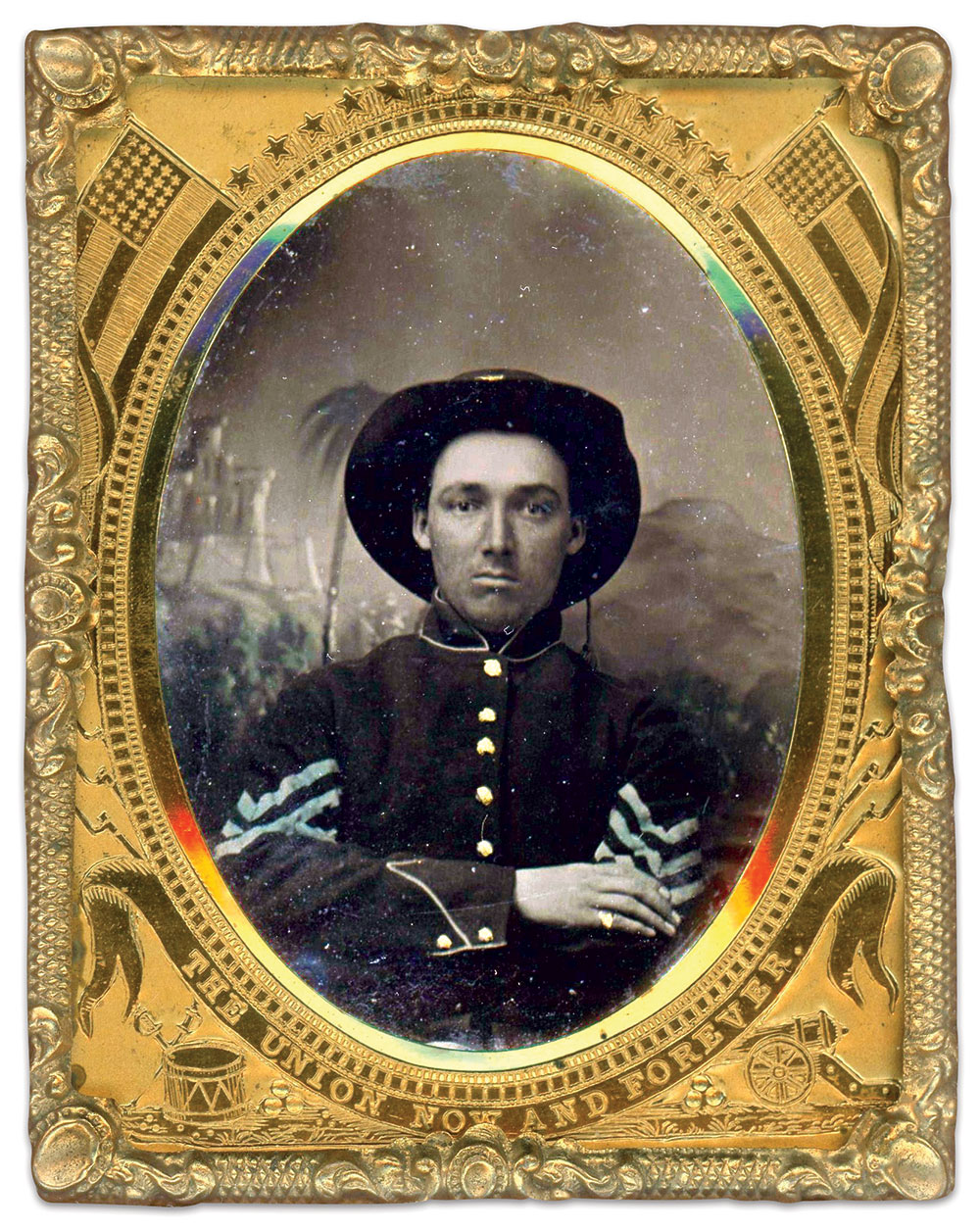
When the Northwest Rifle Regiment formed in Chicago in the summer of 1861, its volunteers included 20-year-old sergeant Benjamin F. Rolph. It became the 44th Illinois Infantry. Rolph participated in major operations during his service, including the battles of Perryville, Stones River, Chickamauga and the Atlanta Campaign. He ended the war as captain of Company B. Rolph went on to be a county clerk in Coldwater, Mich. A spirited public servant, he held a special interest in the plight of the poor. He died in 1912 after his bicycle collided with an ice wagon. He was 71. His wife, Augusta, survived him. His obituary noted, “In the days when the nation struggled with the folds of the serpent of slavery and stood face to face with disunion and death, Benjamin F. Rolph was at the front.”
1862
Sword and pen
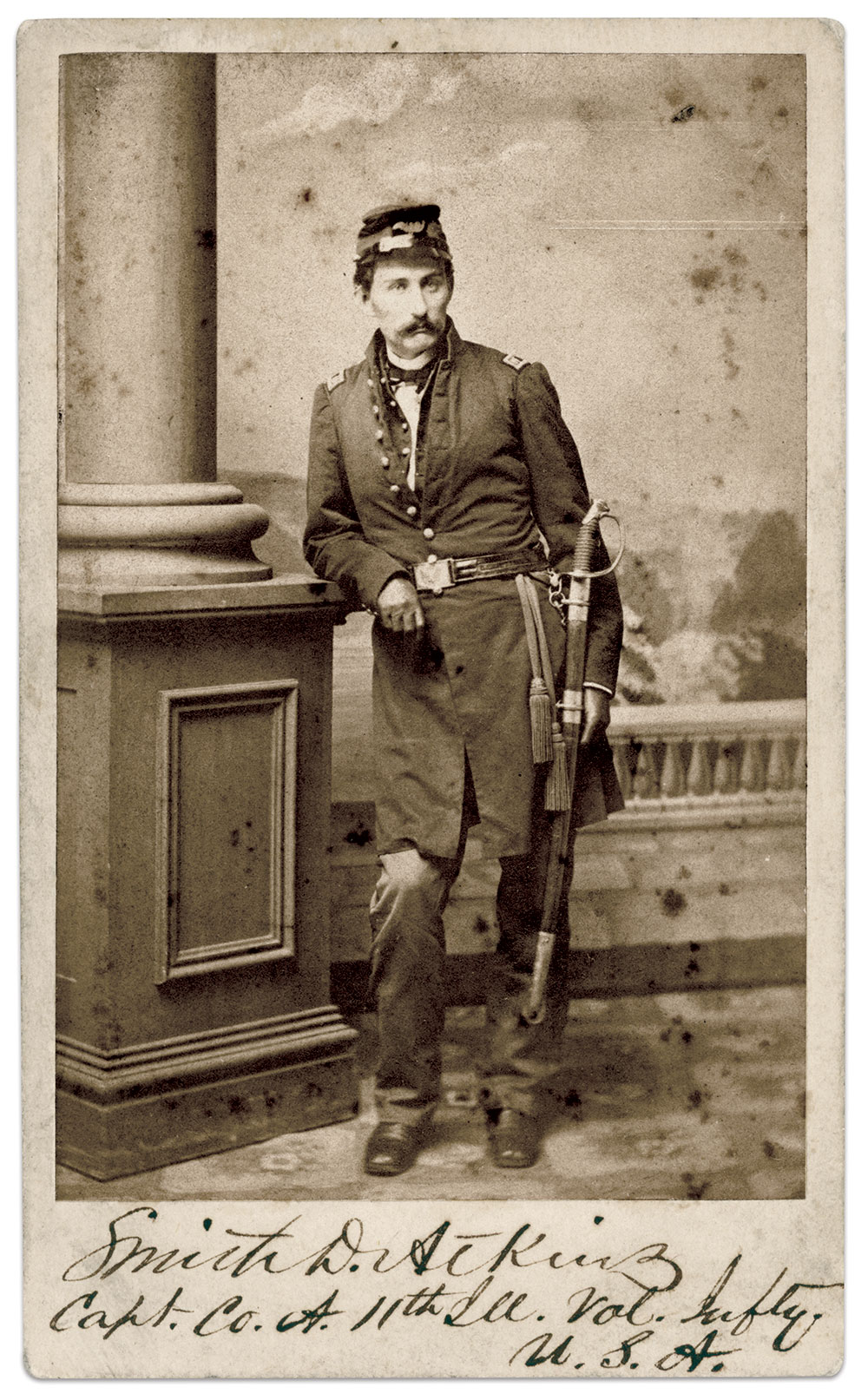
Smith Dykins Atkins of Freeport, Ill., claimed to be the first in his county to volunteer for military service after Fort Sumter. A New York born, seminary-educated attorney, he became captain of Company A of the 11th Illinois Infantry. In April 1862, he led his command into the fight at Shiloh and came out with only 11 of his men. Before the year’s end he left the 11th to accept the colonelcy of the 92nd Illinois Mounted Infantry. He went on to command cavalry on the brigade level, notably during the 1864 March to the Sea. He ended his service in 1865 with a major general’s brevet—and a wife. While in charge of forces occupying Chapel Hill, N.C., he met and married Ella Swain, the daughter of the president of the University of North Carolina.
Ella returned to Freeport with Atkins, and they began a family that included three children. Atkins became editor of the Daily Journal. Buried in Freeport Cemetery after his death at age 77 in 1913, his remains rest beneath a stone used in the composing room of the Journal. Upon it are engraved important life events, including his service with the 92nd.
Armed with an Austrian Musket
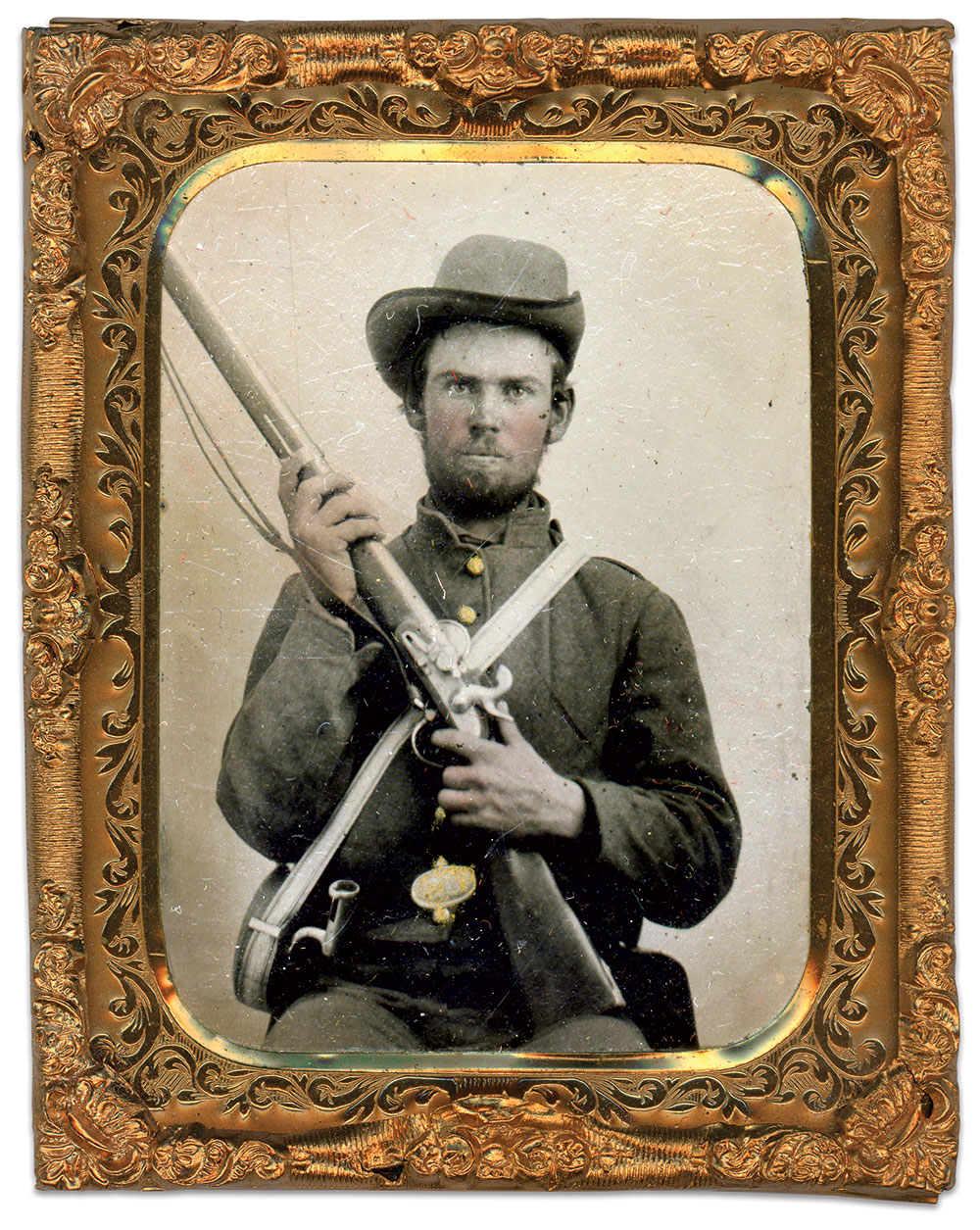
John M. Hughes of the 38th Illinois Infantry strikes a martial pose with an Austrian Model 1842 tube or pill lock musket. A resident of Mason, Ill., Hughes enlisted in Company B in late 1861 and received a disability discharge in March 1862. Five months later, his health restored, he rejoined Company B and served in the ranks for the war’s duration. The 38th fought at Chickamauga, the Atlanta battles, Franklin and Nashville. Hughes’ post-war whereabouts are currently unknown.
A Guerrilla Warfare Victim
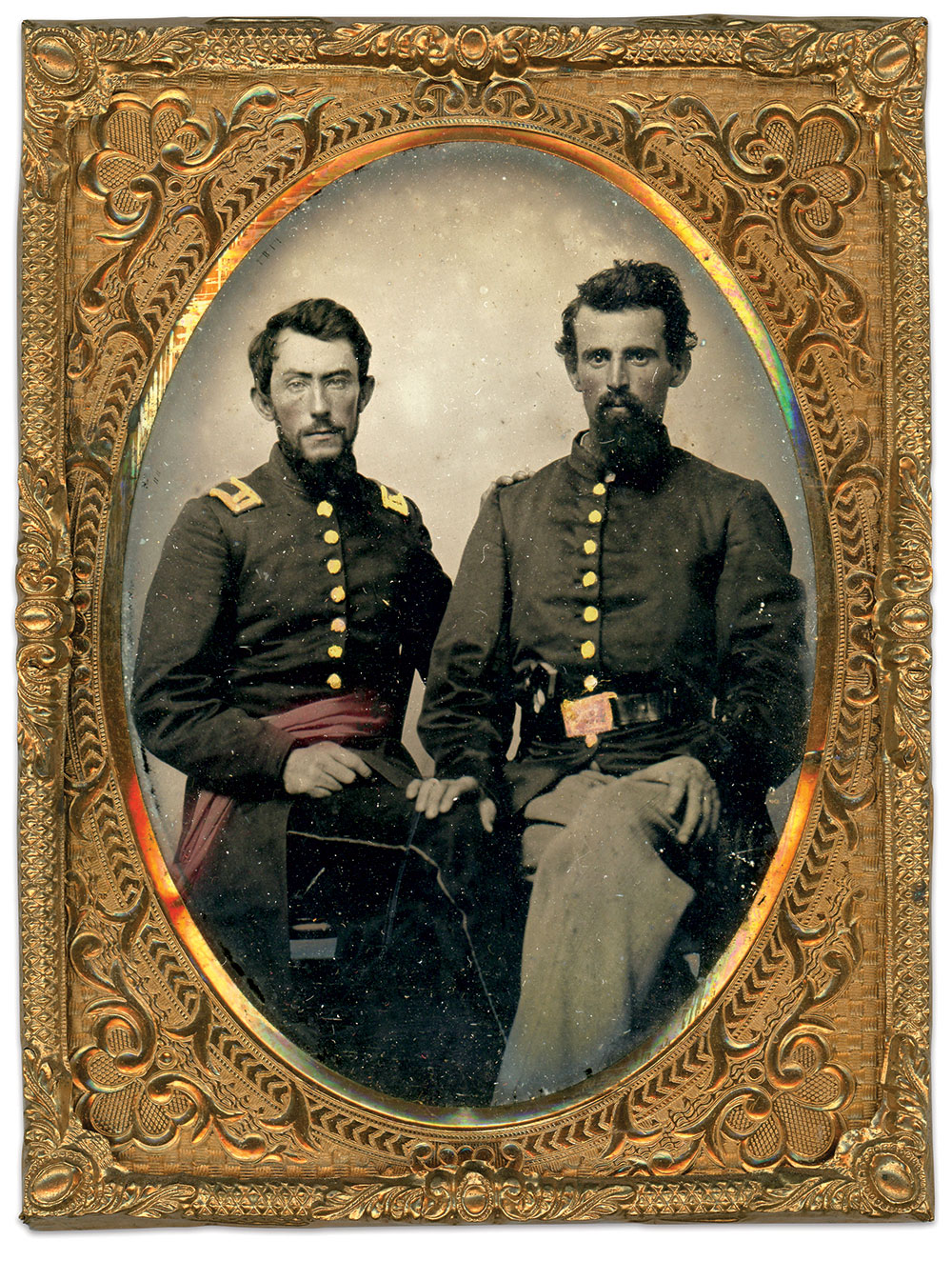
The tit-for-tat attacks between U.S. forces and guerrilla bands claimed the lives of many, including the man pictured on the left: 1st Lt. Nathaniel Boicourt Cunningham of the 6th Illinois Cavalry. On Sept. 5, 1862, he commanded a detachment of 15 troopers sent from Memphis to protect families in nearby Hernando, Miss. He did not return. Bushwhackers ambushed the men along the way. They shot and killed Cunningham; by one account six shots were pumped into him and his body stripped of valuables and clothing. Another detachment from the 6th responded by taking a man from a nearby home into custody. When he broke loose and fled, the troopers shot him dead and torched the house.
Cunningham’s remains rest in an undocumented grave in the Odd Fellows Cemetery at Metropolis, Ill. The officer seated next to him, 2nd Lt. Hugh F. Patterson, was slightly more fortunate. He succeeded Cunningham as first lieutenant, but barely survived the war, dying in 1866.
Husband of the Famous Belle Reynolds
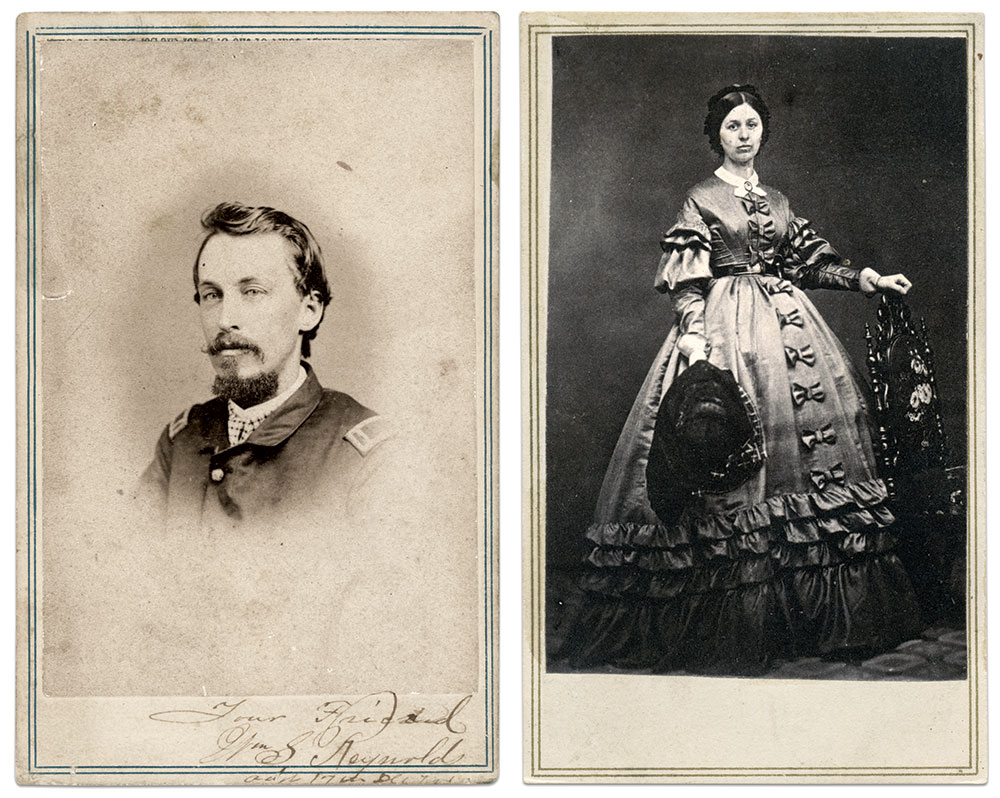
Second Lieutenant William S. Reynolds of the 17th Illinois Infantry suffered an affliction common to newlywed husbands off at war—separation anxiety. Letters eased the pain, but not entirely. His wife came up with a cure when she joined him in camp in August 1861. She was the former Arabella Loomis Macomber. The pair, so the story goes, had first met as children back home in Massachusetts, and began a courtship that ended in marriage in Illinois. Neither of them could have imagined that Arabella would become nationally known as Civil War nurse Belle Reynolds. She went on to become a physician and served a second tour of duty as a nurse in the Philippines in 1899. Her marriage to William did not survive—they divorced in 1884. He died in 1910 and she passed in 1937.
Crossing the Rappahannock
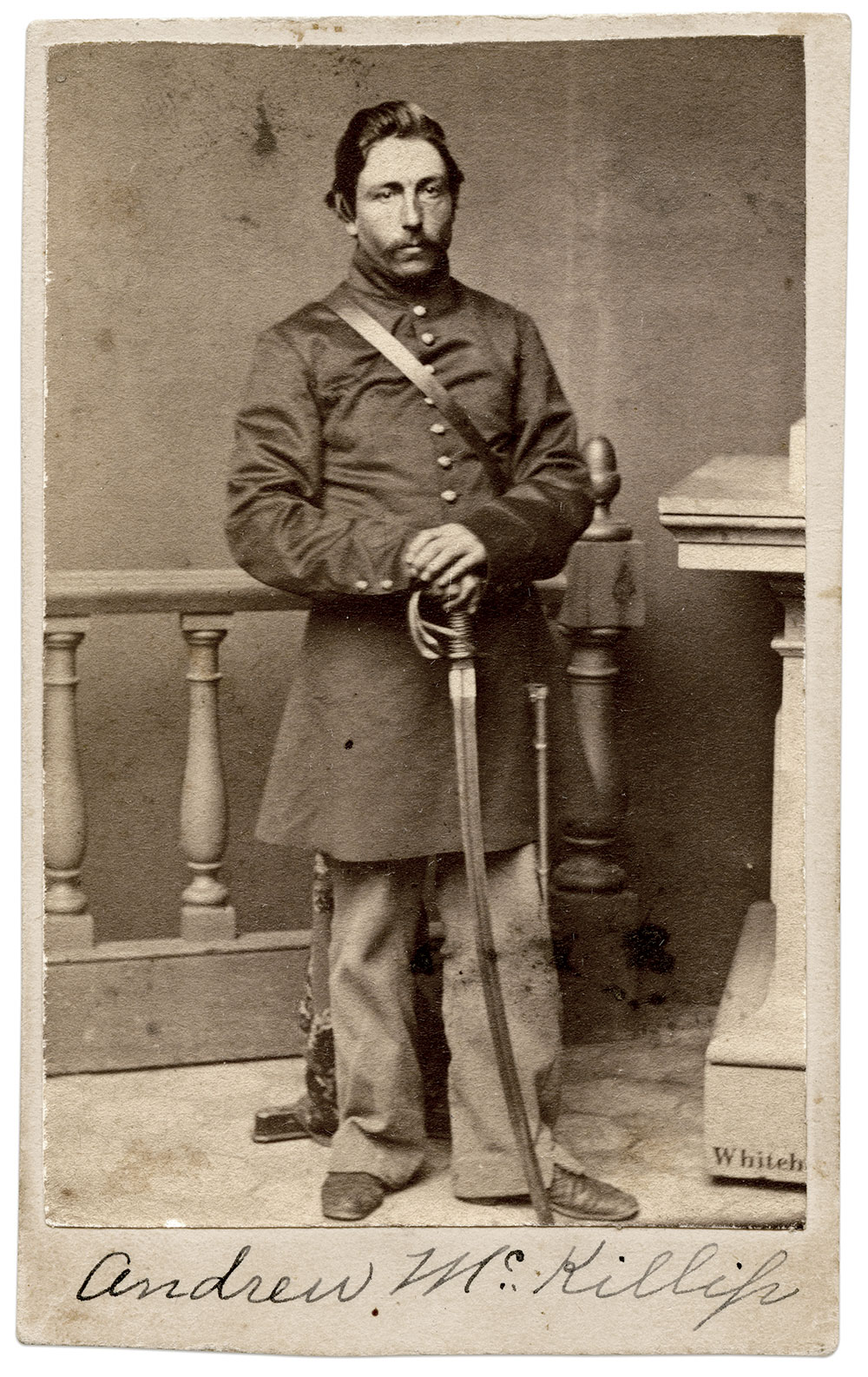
Andrew J. McKillip and his fellow artillerymen made their way across a pontoon bridge at Fredericksburg on Dec. 12, 1862. The movement drew the fire of rebel forces, resulting in the deaths of two men, including McKillip. His service began the previous year when he joined an independent light artillery battery organized in Chicago. In late September 1861, the recruits, composed of Illinoisans and Michiganders and led by Capt. Richard Busteed, left for Washington, D.C., with the understanding that the War Department would provide them with uniforms, equipment and cannon. The government made good on its word. But it also transferred the artillerists to Battery G of the 1st New York Light Artillery. McKillip survived the Peninsula Campaign and Antietam before losing his life at Fredericksburg. He was about 23.
The Great Artillery Duel
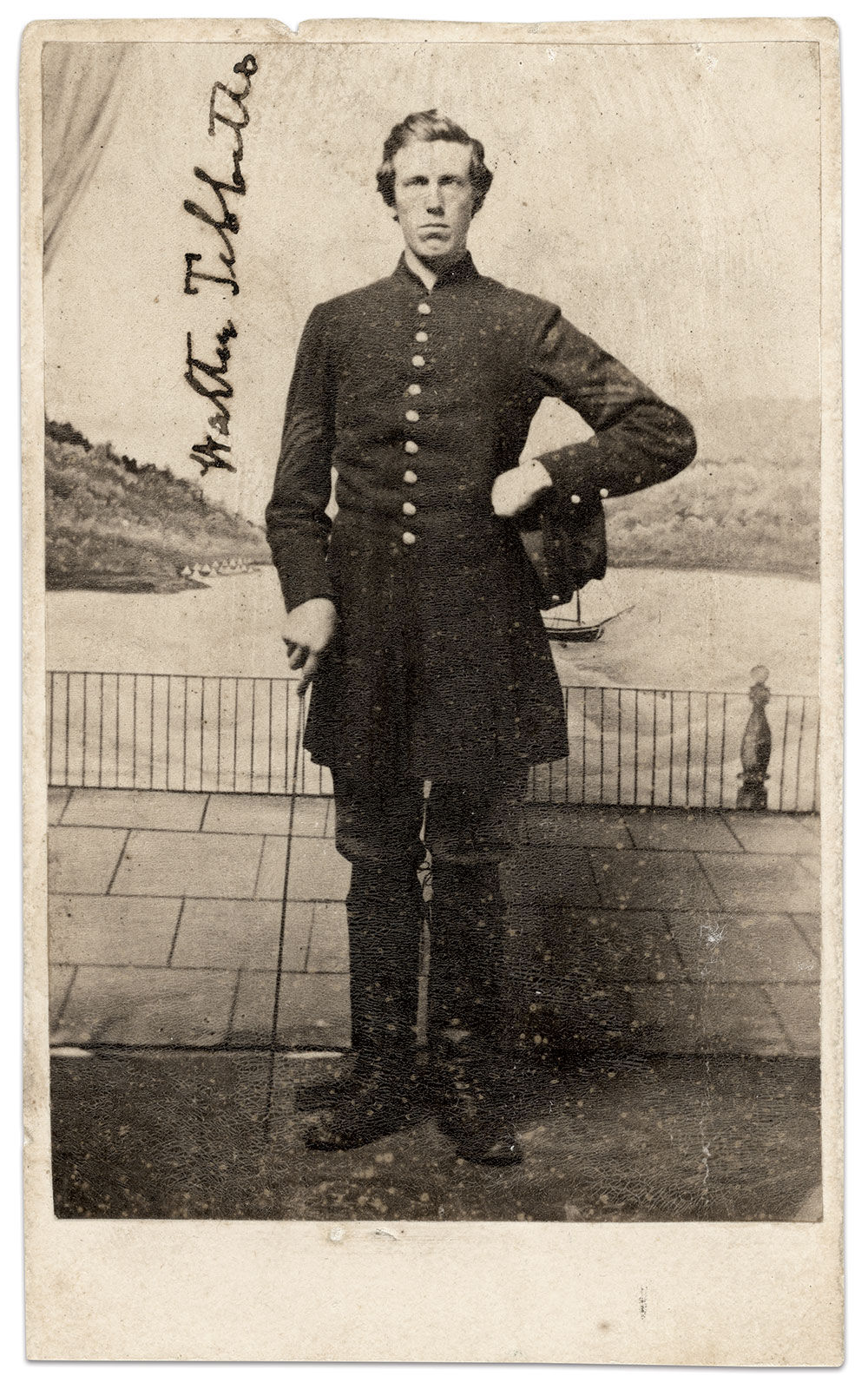
The Chicago Light Artillery gave as good as it got at Shiloh. According to its after action report, the major commanding, Ezra Taylor, found Battery I “anxious to distinguish themselves.” Taylor took the artillerists at their word and ordered them to support Col. John MacArthur’s Division. “They did most excellent service in driving the enemy from a very commanding position, both officers and men behaving like veterans,” noted Taylor.
One of the Battery I boys in action that day, Sgt. Walter George Tebbetts, is pictured here. A New Hampshire native who lived in Chicago and worked as a clerk, he enlisted in December 1861. Tebbetts joined Capt. Edward Bouton’s Battery, which mustered into federal service as Battery I in February 1862. Two months later at Shiloh, Tebbetts suffered a wound after a six-pound shell struck the horse upon which he sat and exploded beneath the saddle. The injury ended Tebbetts’ service and he mustered out in September 1862.
Tebbetts married in 1863. Upon his death in 1907 at age 66, his wife, Elizabeth, and two children, a biological son and adopted daughter, survived him.
A Day of Destroying Man
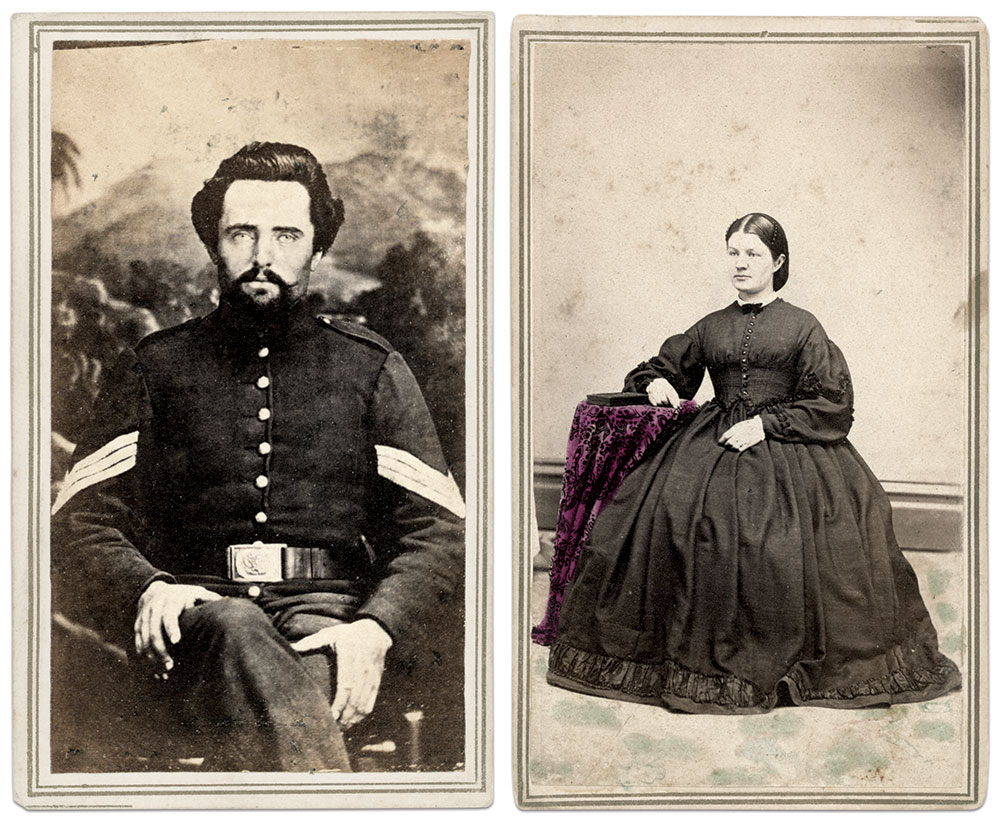
The regimental history of the 36th Illinois Infantry noted that Sept. 20, 1863, a Sunday, would normally have focused on praising God. But this Sabbath—at Chickamauga—would be spent destroying man. One of the men sacrificed in the inferno of battle that day, 28-year-old Sgt. William James Willett of Company E, was a New York-born farmer in Bristol, Ill. Two accounts of his death survive. One notes he was killed outright. The other states he suffered a dangerous wound and fell into enemy hands. He left behind a widow whom he married at some point during his enlistment. The back of her portrait is inscribed “Mrs. William J. Willett.”
1863
Raising a Hot Button Topic With Rebels
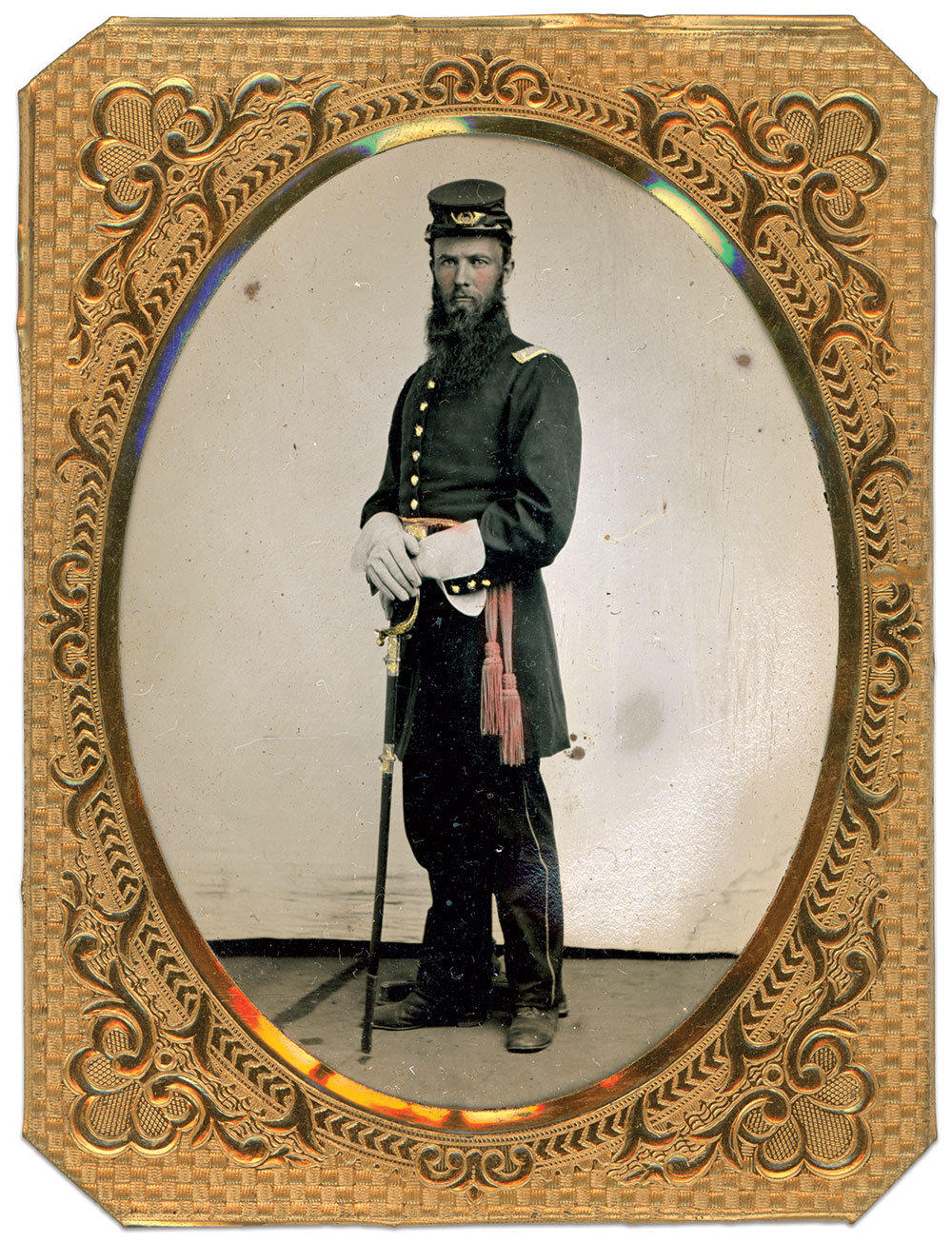
Early in the Tullahoma Campaign, 1st Lt. Wesley Porter Andrus of the 42nd Illinois Infantry encountered about 400 rebel prisoners, all troopers in Maj. Gen. Joe Wheeler’s cavalry. Andrus chatted with them, and after the usual banter he raised a hot button topic.
“I asked one of them what they thought of our arming the Negroes against them. ‘We will kill every one of them we can get hold of,’ was his reply. ‘Will you?’ said I. ‘Good, we have got 400 fine fellows to retaliate with,’ I very coolly remarked. ‘Unfortunate foreigner,’ (he was a Dane) I continued, ‘you are a prisoner at a very precarious period if your policy shall prove to be that adopted by your government for, mark you, every Negro you kill after surrender or capture, a white Rebel soldier hangs!’ I said this quite loud so that as many of the Rebels as possible might hear me. It made the eyes of a good many of them stick out, but not one of them made any reply. The Danish gentleman thereafter subsided.”
Andrus, a New Yorker who had settled in Michigan before the war, crossed into Illinois to join Company I of the 42nd when it formed in 1861. He appears here armed with a regulation foot officer’s sword. Andrus distinguished himself in operations against Island No. 10 and the Battle of Stones River. About a week after his interaction with the prisoners, Andrus received his captain’s bars and a transfer to Company H. He served in this capacity at the Battle of Missionary Ridge on Nov. 25, 1863, and suffered serious wounds in the rush to take rebel rifle pits at the mountain’s base. He left the army with a medical discharge in May 1864. Andrus returned to Michigan and opened a hardware store in Cedar Springs. He died in 1898 at age 64. His wife and four children survived him.
Death at Vicksburg
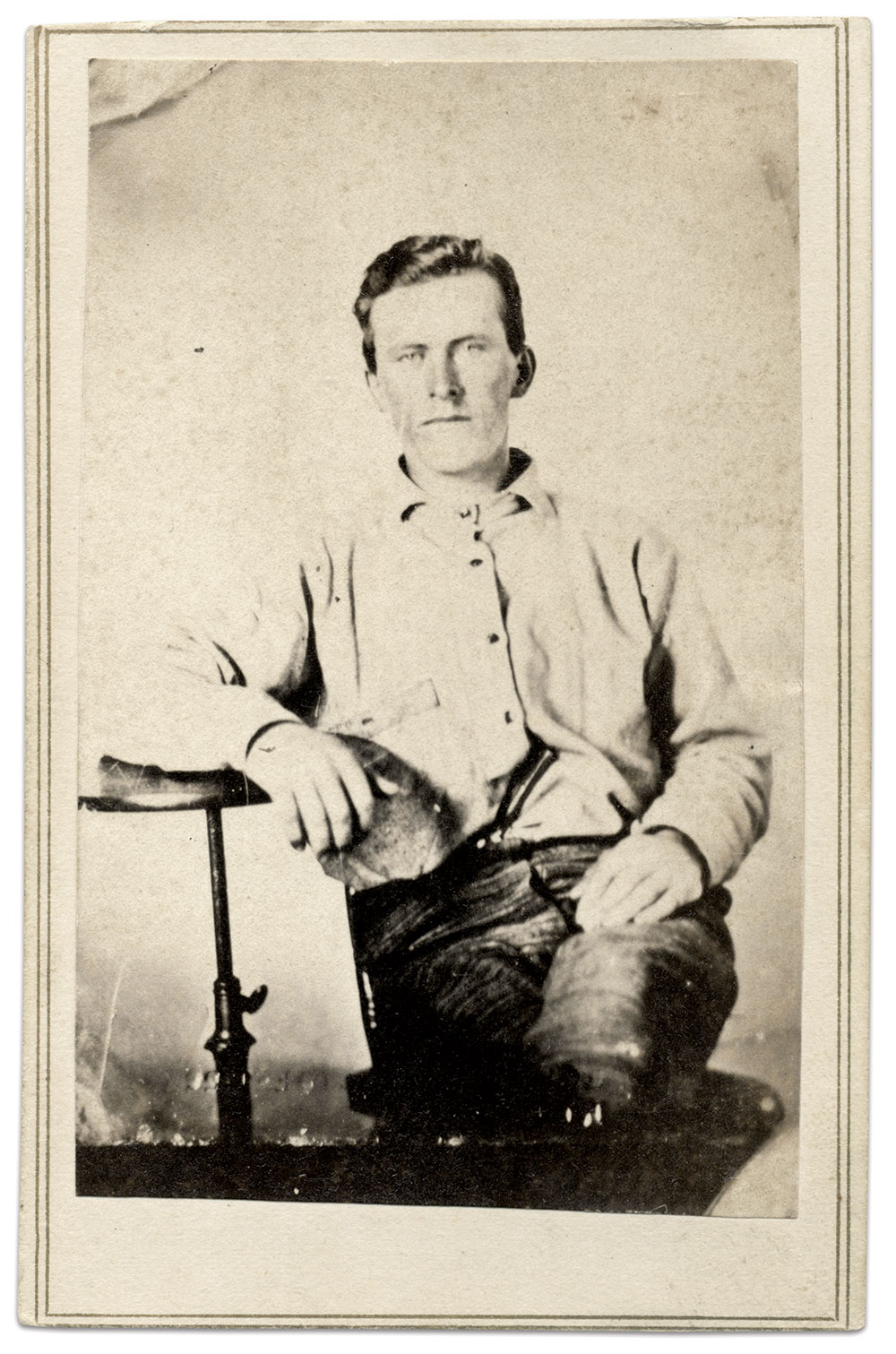
Jim Ingram Collection.
On May 22, 1863, the 33rd Illinois Infantry fought in the second assault against the defenses of Vicksburg. The regiment’s experience echoed the rest of the army. Its advance stalled and the men sought cover in a ditch in front of the enemy’s entrenchments. Of the 250 men who went in, about 75 became casualties. Among the dozen killed was Jason Lee Watson, 24, of Henderson, Ill. A cenotaph in the Watson family cemetery is inscribed “He sleeps in a patriot’s grave where he fell a martyr for his country.”
Dressed for Picket
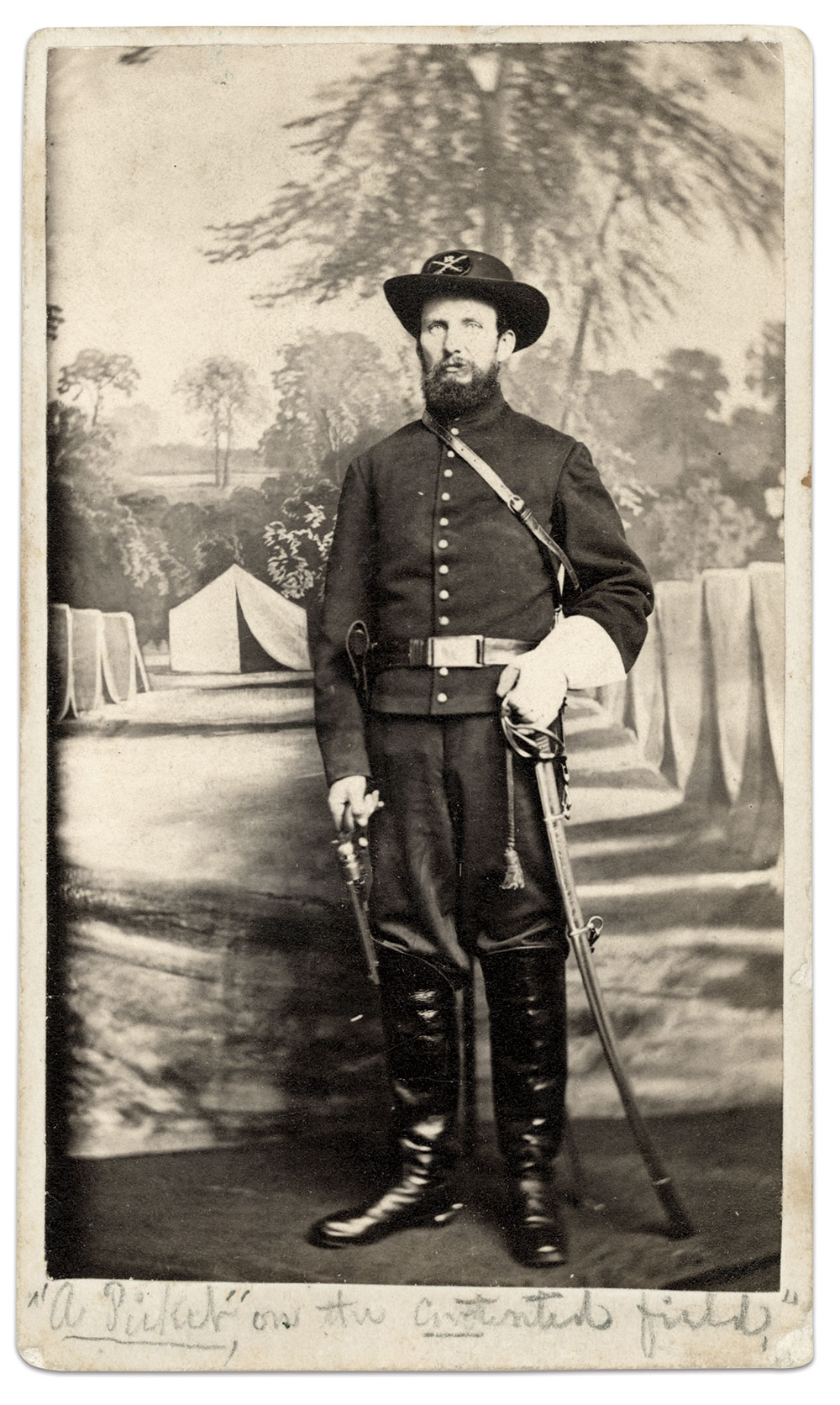
Captain Cephas Strong of the 12th Illinois Cavalry is pictured here with no visible rank insignia, two revolvers (one Colt Army model in hand and another holstered), a Model 1840 cavalry saber, and tall privately purchased boots. Two notes provide helpful context. “‘A Picket,’ on the contested field” appears on the front of the mount and “Working Costume” along with his name, rank and regiment on the back. Strong began his service as first lieutenant of Company E and ended as the regiment’s major in 1865. He participated in numerous Eastern Theater actions, including the Peninsula Campaign, Fredericksburg, Antietam and Gettysburg. Strong survived it all. His name disappears from federal records after he left the army.
No Quarter to Copperheads
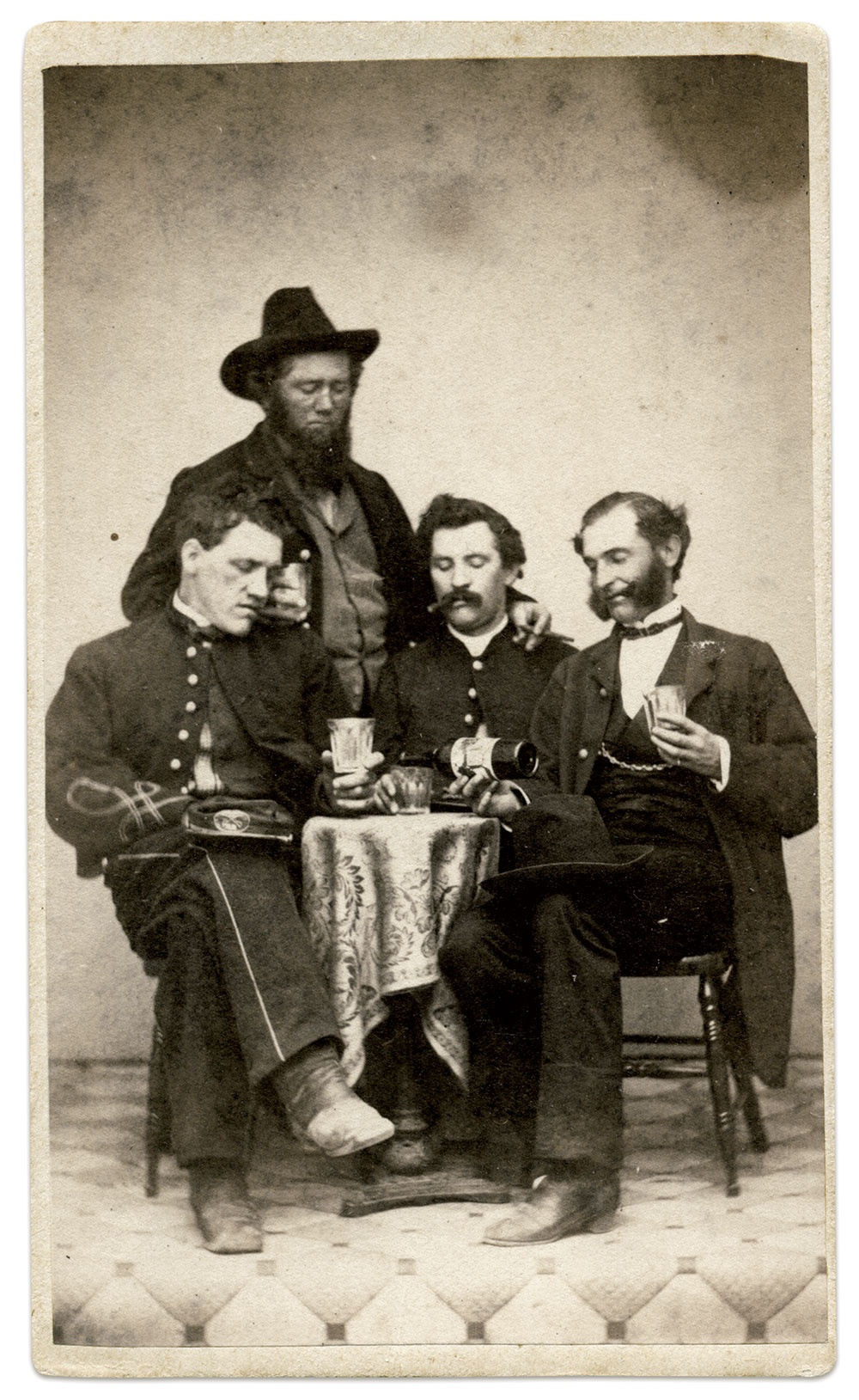
The existential threat posed by Northern Copperheads, a Democratic Party faction agitating for a peaceful settlement with the Confederate nation, did not sit well with Illinois soldiers. In April 1863, two brigades of Illinoisans drafted resolutions condemning the movement and its leader, Ohio Congressman Clement Vallandigham. The resolutions were read to the officers and men of each participating regiment and put to a vote. In the 22nd Illinois Infantry, reported 1st Lt. and adjutant R. Harry Clift, “the colors were ordered two paces to the front, when all who voted in their favor marched up to the colors. The entire vote of the regiment was for the resolutions, with the exception of one negative.”
Born Robert Henry Clift in Connecticut, he worked as a sailor prior to the war. He’s pictured in this tableau, seated second from right, enjoying drinks and cigars with unidentified comrades. An inscription on the back describes him as purser of the steamship Varuna, a playful reference to his career as a seaman and the renowned gunboat constructed in his home state. In June 1861, he joined the 22nd as first lieutenant, advanced to adjutant, and resigned his commission in late 1863. He barely outlived the war, dying at age 31 in 1869 in Connecticut. He left behind a wife.
Unappreciated Language
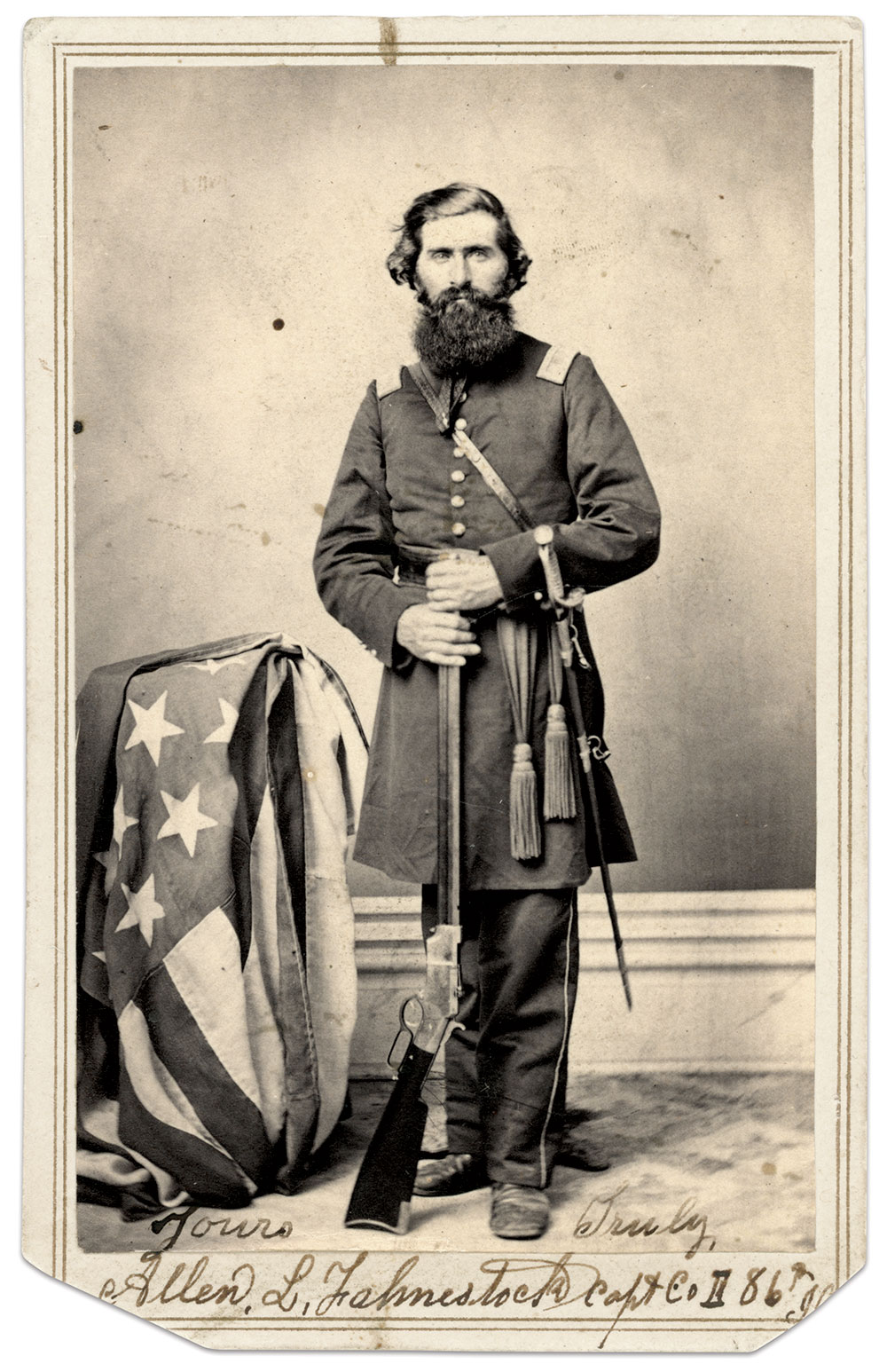
The month leading up to the Battle of Chickamauga tested the endurance of the 86th Illinois Infantry. Exhausted in body and mind from long marches and encounters with guerrilla bands, the regiment had little time to rest when heavy skirmishing began on Sept. 17, 1863. Two days later, on the skirmish line, Capt. Allen Lewis Fahnestock encountered two rebels, who shouted, “Surrender you Yankee son of a Bitch.” Fahnestock recorded what happened next in his journal. “I did not appreciate such language. I leveled my Henry Rifle 16 shooter and shot both of them.”
This is one of incidents of the war related by Fahnestock, a Glasford, Ill., grocer born in Pennsylvania. In the summer of 1862, at age 34, he helped raise Company I of the 86th from Glasford and vicinity. Over the next three years, the 86th participated in the Georgia and Carolina Campaigns. Fahnestock mustered out as lieutenant colonel and died in 1920 at age 92. He outlived his wife and three children survived him. Fahnestock’s journal and other recollections have been quoted in many publications.
Patients
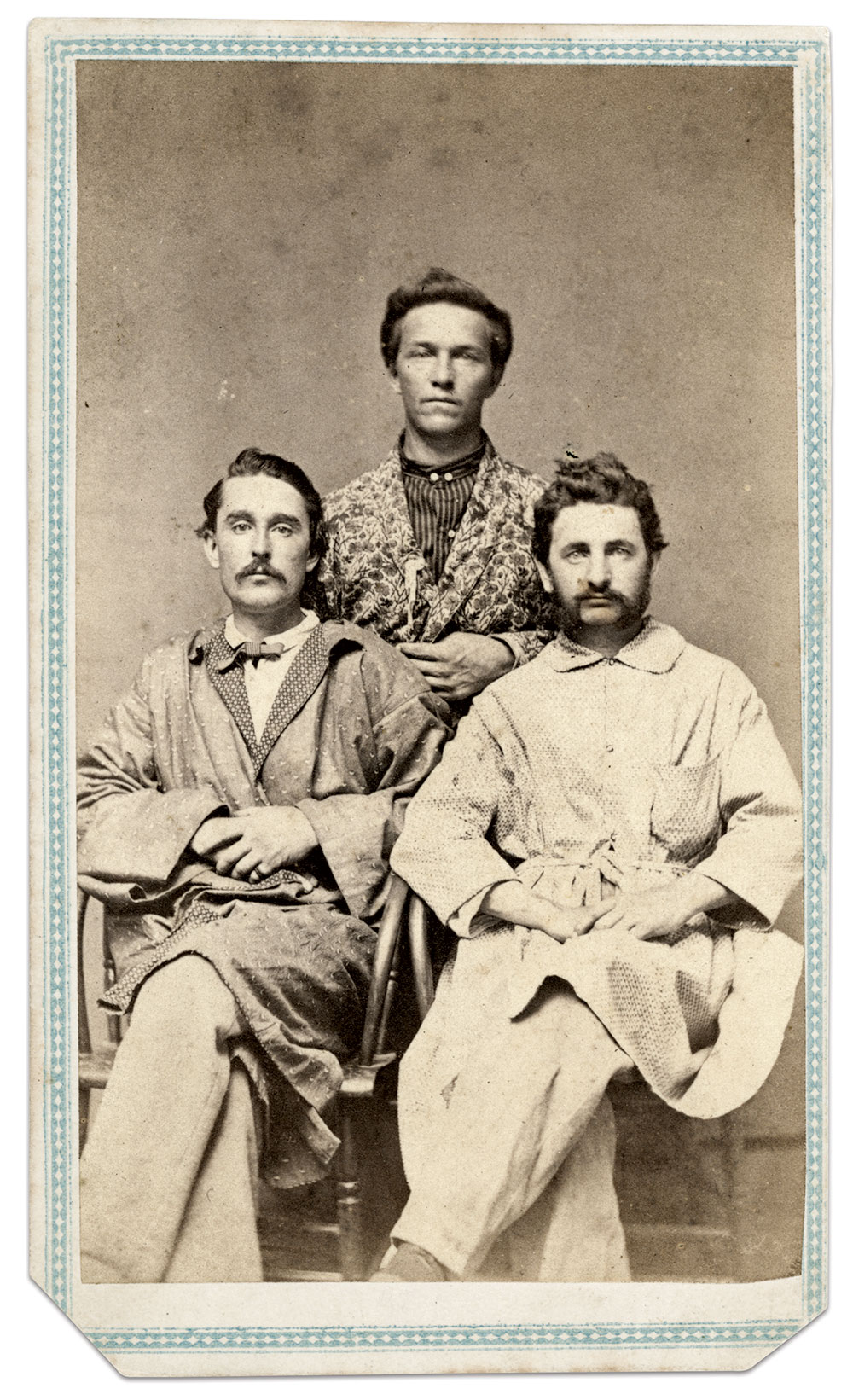
On Aug. 1, 1863, this robe-wearing trio posed for their portrait in Memphis, Tenn. Patients in one of the city’s military hospitals, they served in the ranks of Company I, 72nd Illinois Infantry. They are, from left: Nathan Elden Bradbury, Jeremy M. Cramblett and William Jennings. It is likely that they had fallen ill during the recent Vicksburg Campaign. All three survived their hospital stay, mustered out of the army in 1865, and lived into the 20th century.
“The Flag Under Which I Was Wounded”
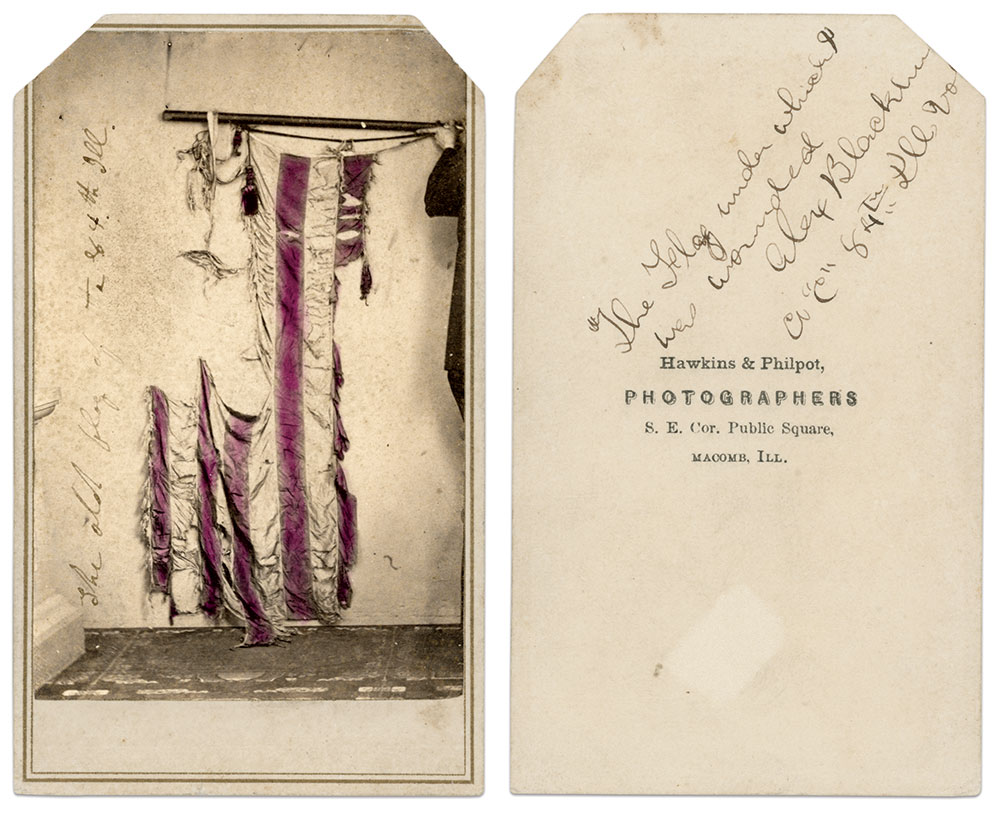
Randy Beck Collection.
Alexander Blackburn inscribed these words on the back of this portrait of the tattered national colors of the 84th Illinois Infantry. He suffered the wound at the Battle of Chickamauga, which resulted in a long hospital stay in Nashville. Following his release, he received a promotion from a corporal in Company D to hospital steward on the regimental staff. He served in this capacity through the war’s end. He went on to become a Baptist minister and pastored to faithful flocks in Chicago, Indiana, Oregon and Massachusetts, where he died in 1921 at age 76.
Second Battle of Fort Donelson
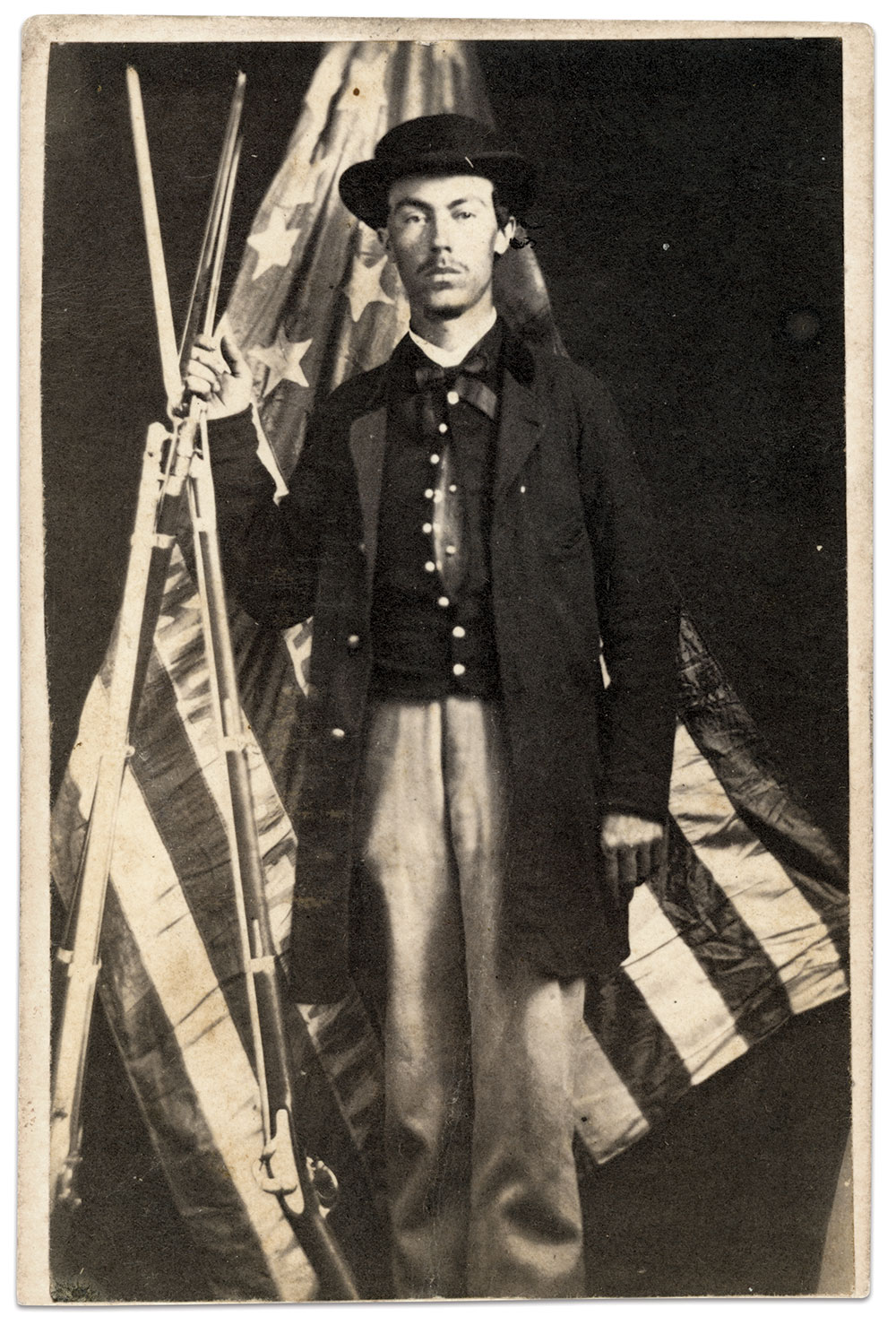
On Feb. 3, 1863, the 800-man Union garrison at Dover, located along the Cumberland River near Fort Donelson, repulsed an attack by enemy forces more than three times its size. The fight went down in history as the Battle of Dover, or Second Battle of Fort Donelson. One of the soldiers who repelled the rebels is pictured here: Pvt. Newton Lewis Pears of the 83rd Illinois Infantry. A farmer’s son born in Ohio, he moved with his family to Rock Island, Ill., before the war. Pears mustered into Company A of the 83rd in the summer of 1862. He spent much of the next three years in Tennessee on garrison and guard duty, skirmishing with irregular forces. On May 1, 1863, he stood for this portrait at Fort Donelson, according to an inscription on the back.
Pears returned to Illinois after the war, and then migrated to Arkansas and later Washington State. He died in 1932 at age 89. He outlived two wives, and two children survived him.
Leave of Absence
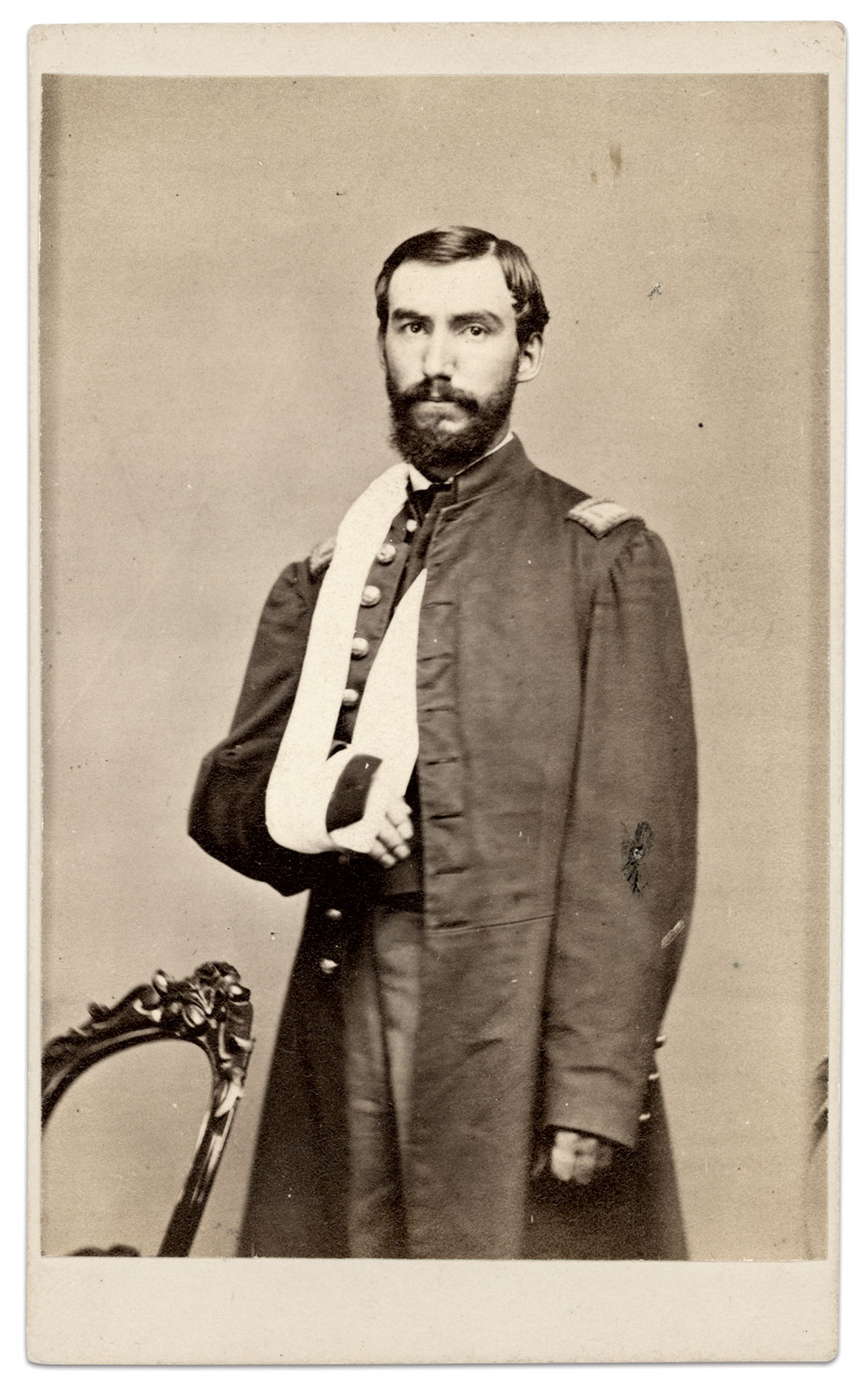
Second Lieutenant Richard Pomeroy of the 72nd Illinois Infantry posed for this portrait in Chicago during leave in the summer of 1863. His bandaged arm likely resulted from a wound received during the May 22 assault against Confederates at Vicksburg. In September 1863, Pomeroy returned to now Union-occupied Vicksburg and rejoined his Company F, which, with the rest of the 72nd, served as provost guard. The monotony of this duty was broken in May 1864 when the regiment left on an expedition in pursuit of Confederates. On May 7, near Benton, Miss., Pomeroy commanded two companies of skirmishers when shrapnel from an exploded rebel shell tore into his leg. Carried to a makeshift hospital, he succumbed to the wound that evening. Comrades buried him in a churchyard in Benton. “There was not a better officer or braver soldier in the regiment,” observed Lt. Col. Joseph Stockton of the 72nd.
Artillerymen Wanted
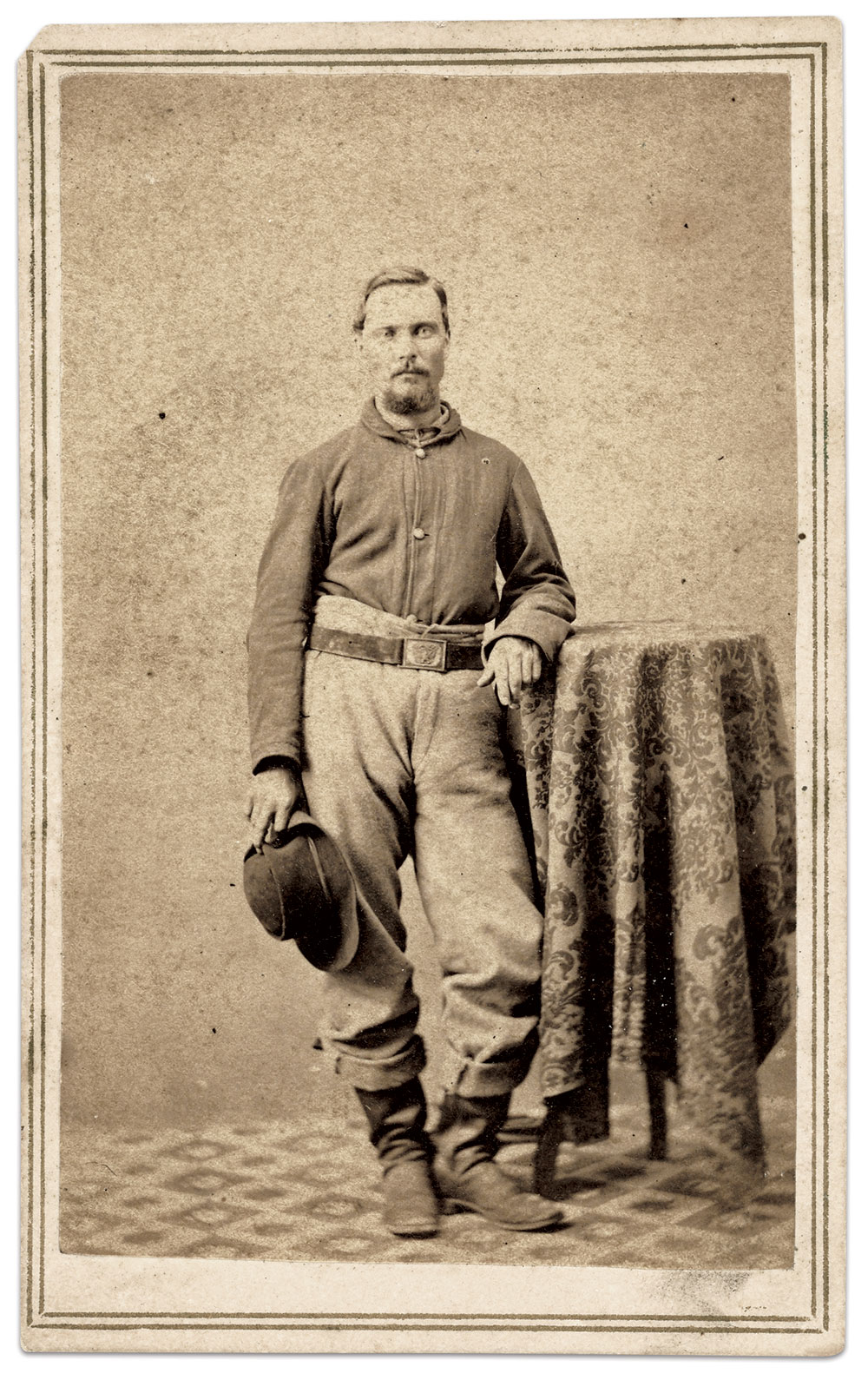
In 1862, the U.S. garrison occupying Nashville had a problem—not enough artillerymen. To fill the void, senior staff ordered an infantry company to trade its muskets for cannon. Thus, Company G of the 19th Illinois Infantry transformed into an independent light artillery battery named for its captain, Lyman Bridges. One of its members is pictured here: Martin Van Buren Waltman. An Ohio-born resident of Chicago, he served in the battery, which participated in numerous major battles, including Chickamauga, where it suffered heavy casualties and lost two guns. Waltman survived, transferred to Battery B of the 1st Illinois Light Artillery in December 1864, and mustered out in July 1865. He eventually settled in Oklahoma, where he died in 1897 at age 58. His wife and seven children survived him.
“Sent Sprawling to Mother Earth”
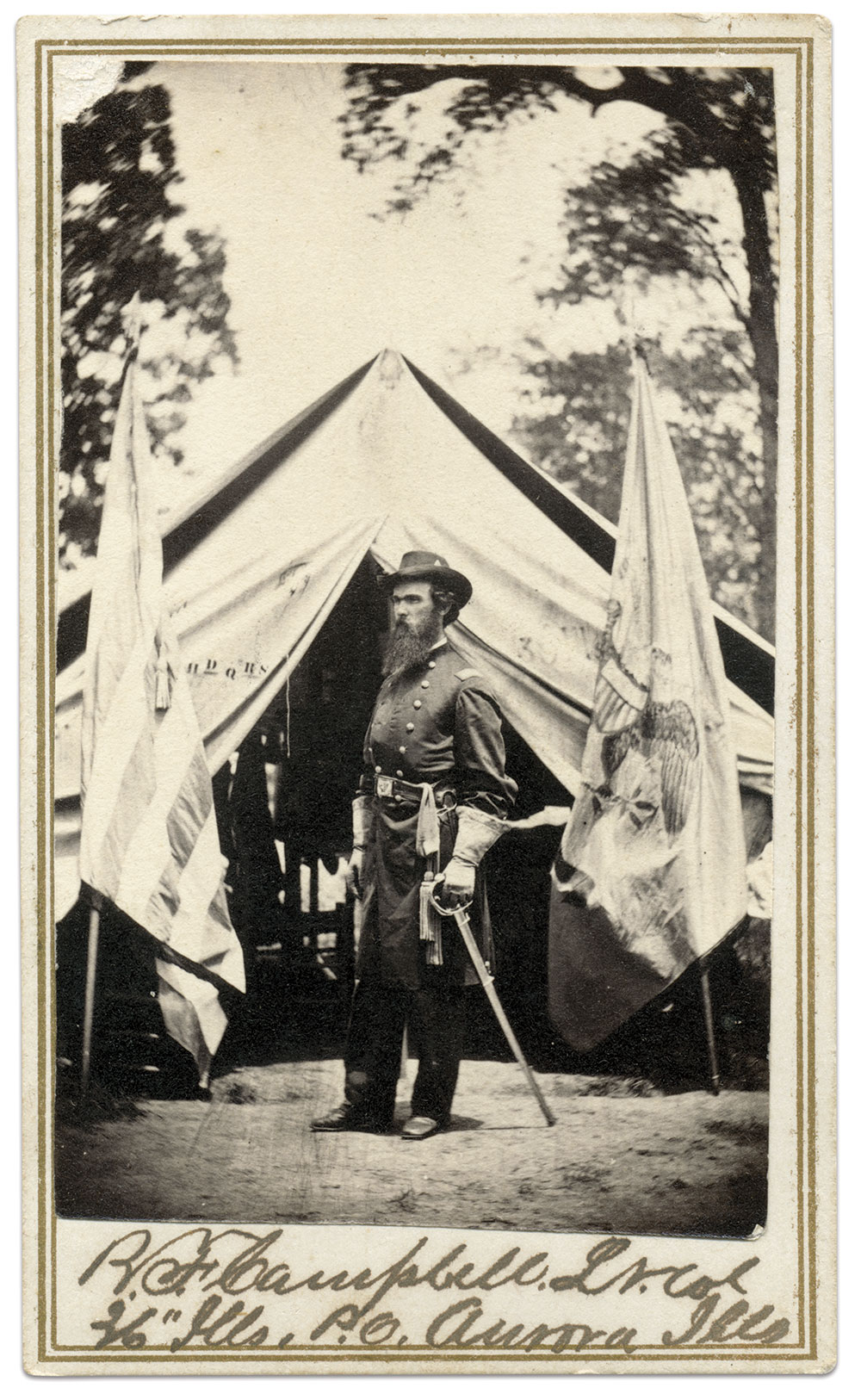
At Chickamauga, a bullet hit Capt. Benjamin Franklin “Frank” Campbell in his right chest just after he had rallied his men and advanced to meet the enemy. “I was sent sprawling to Mother Earth, almost helpless, from the effects of a shot in the right breast, operating severely on my ribs, at the same time causing me to spit blood quite freely,” he wrote. Surrounded by Confederates, a Georgia officer confiscated his weapons and ordered Campbell to the rear. He rose with difficulty and obeyed. Thus began a 15-month stint in captivity—his second time a prisoner of war. The first occurred at Stones River after he suffered a wound in his right thigh.
Campbell survived his wounds and imprisonments, and received a promotion to lieutenant colonel. He posed for this portrait about June 1865 at Camp Harker, Tenn. After mustering out of the army, Campbell returned to Aurora, Ill., where he had moved from his native Maine in the 1850s. He later settled in Sioux Falls, S.D., and died in 1898. His wife and three sons survived.
Artillery Action before Knoxville
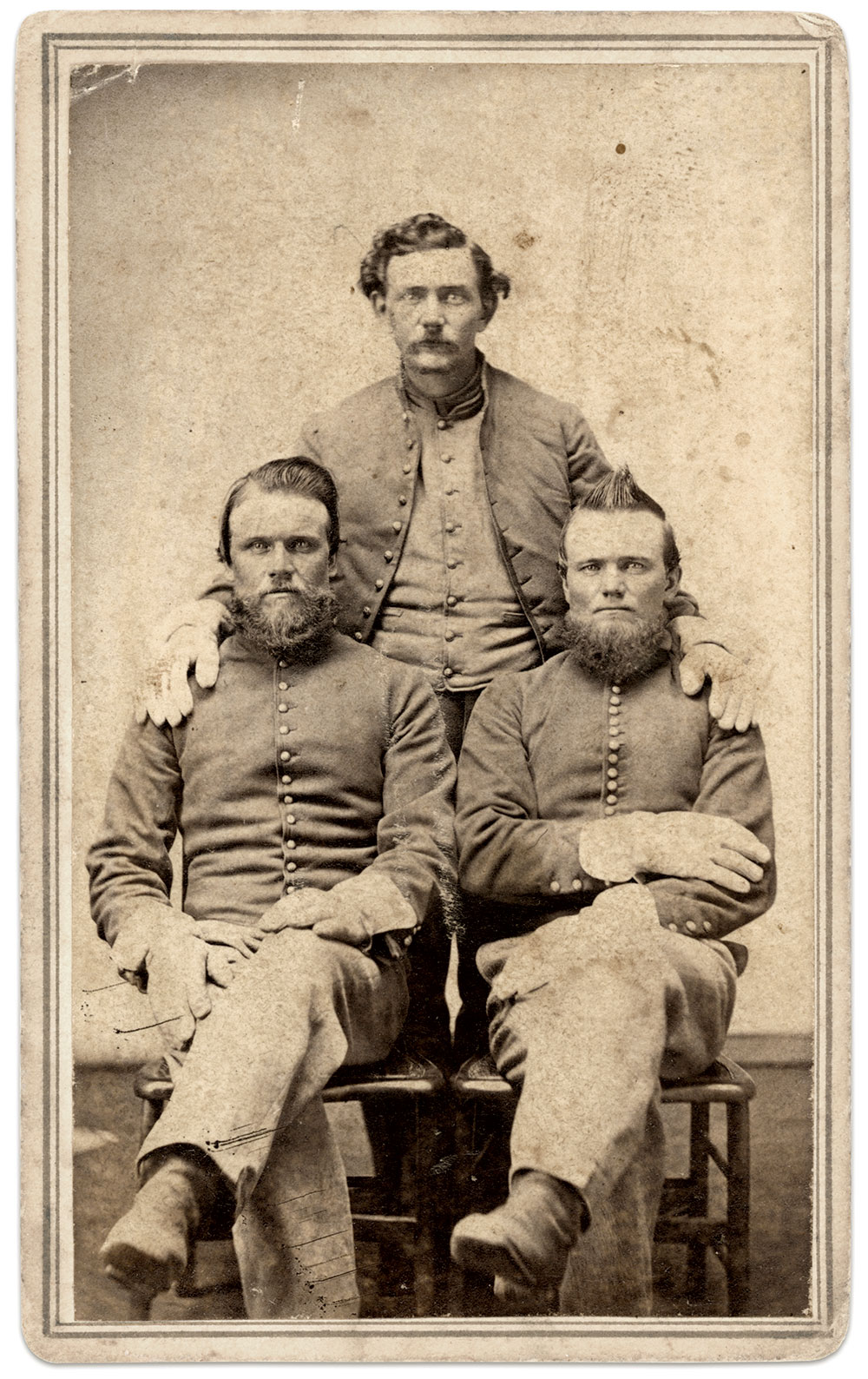
Colvin’s Light Artillery Battery had its first real test during the Knoxville Campaign in 1863. Most of the men had been detached from the infantry, including this trio: Walter Davis (1832-1921), standing, and the Wise brothers, Israel F. (About 1840-1919), left, and Reuben H. (1837-1900). They originally hailed from Ohio and began their service in the 107th Illinois Infantry. They remained in the battery, named after Capt. John H. Colvin, until March 1865, when it was reassigned as Battery K of the 1st Illinois Light Artillery. The artillerymen mustered out of service in July 1865.
From Vicksburg to the USCT
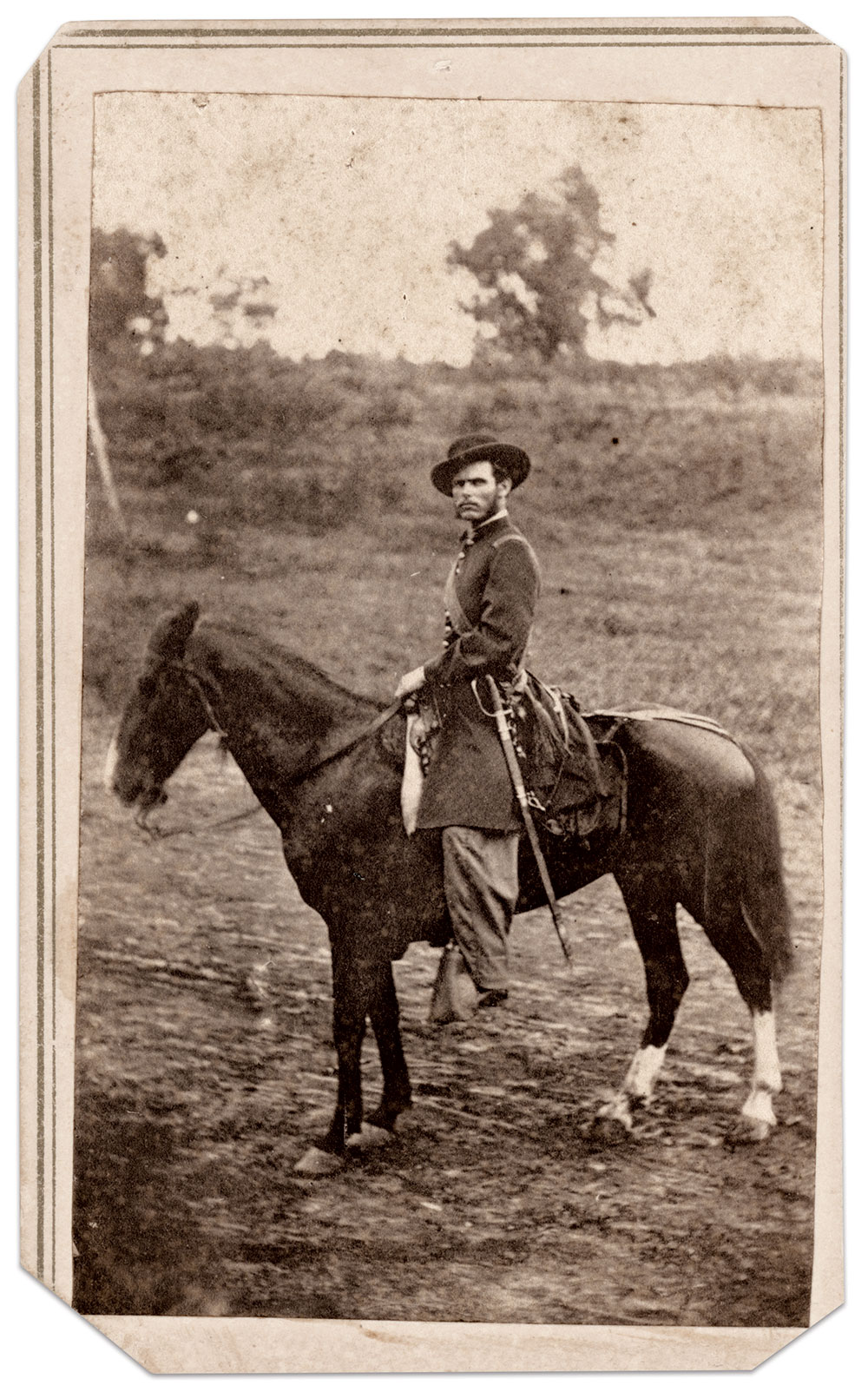
Following the failed May 22, 1863, assault by U.S. forces against Vicksburg’s formidable defenses, Cpl. Charles Ruddell Noe of the 97th Illinois Infantry received a promotion to sergeant major. Born in Kentucky, Noe moved with his family to Illinois in 1856. When the war came, he set aside his college plans and joined the army. In 1864, Noe left the 97th and became an officer in the 78th U.S. Colored Infantry.
After the war, Noe settled outside Wichita, Kan., and became the first mayor of the town of Leon, where he died in 1917. He outlived his first wife and was survived by a second.
1864
Band of Brothers on Top of the World
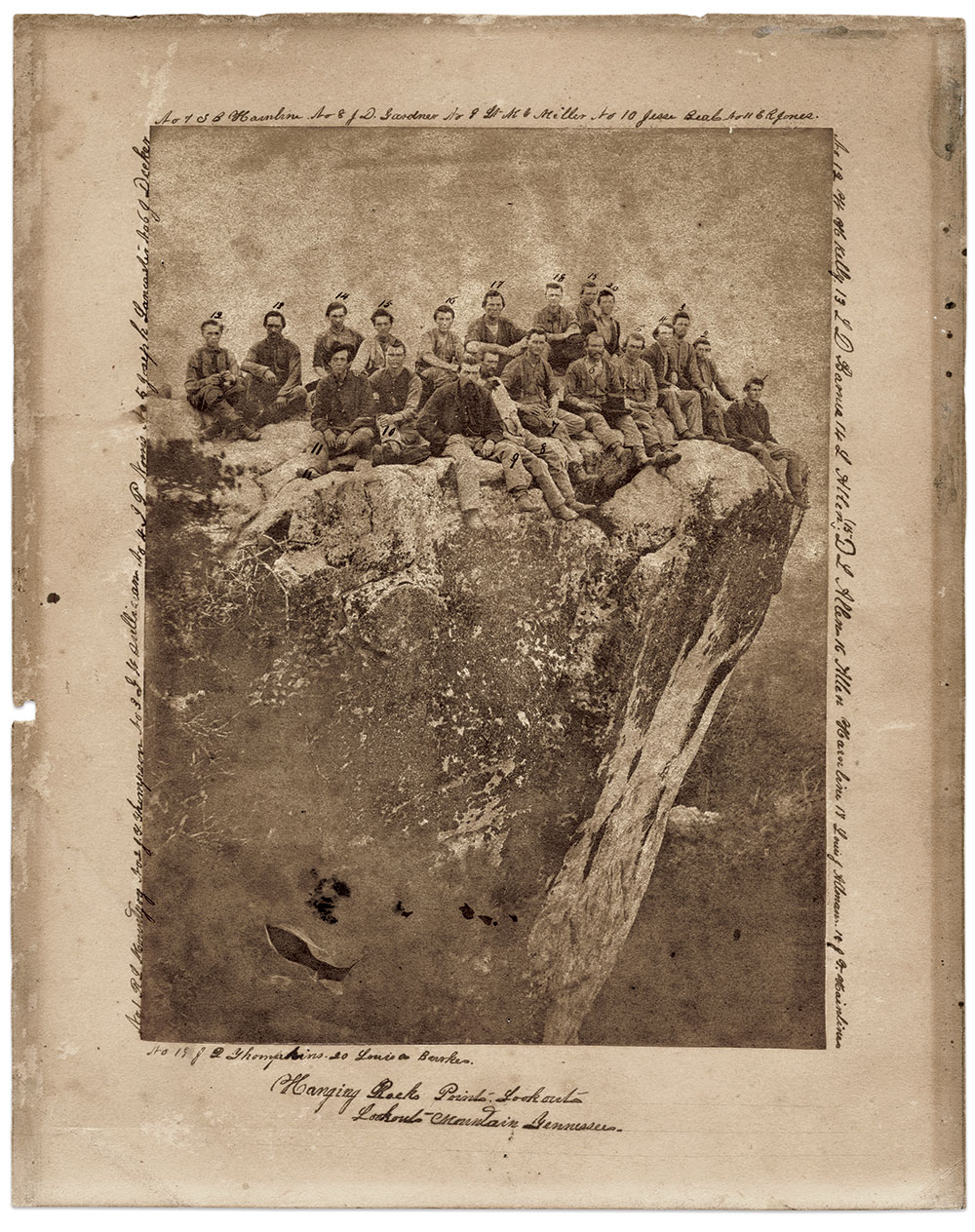
Company E of the 7th Illinois Infantry did not participate in the 1863 Battle of Lookout Mountain. They did, however, visit the site of the memorable fight and posed for this portrait at Point Lookout. Among the earliest visitors to be photographed here, their names were inscribed on the mount and keyed to the faces on the print. An analysis of the service dates of all 20 men reveals they posed in early 1864, sometime between late February, when Pvt. John Q. Tompkins (#19) joined the company, and early March, when Sgt. Lorenzo D. Barnes (#13) left to accept an officer’s commission in the 111th U.S. Colored Infantry. The individual who preserved their names, Pvt. Henry H. Baltzells, is not pictured. He signed his name on the back of the mount. Only one man in this group did not survive the war: Levi Allen (#14), who perished at the Battle of Allatoona, Ga., on Oct. 5, 1864.
1. Robert L. Mountjoy; 2. Jesse T. Thompson; 3. George Sullivan; 4. Israel P. Norris; 5. Joseph Lancaster; 6. Joel or John Decker; 7. Sylvester B. Hainline; 8. John D. Gardner; 9. Martin V. Miller; 10. Jesse T. Beal; 11. Edwin R. Jones; 12. William H. Kelley; 13. Lorenzo D. Barnes; 14. Levi Allen; 15. David L. Allen; 16. Allen Hainline; 17. Lewis J. Allman; 18. John F. Hainline; 19. John Q. Tompkins; 20. Lewis B. Brooks.
Officers of Chicago’s “First Irish”
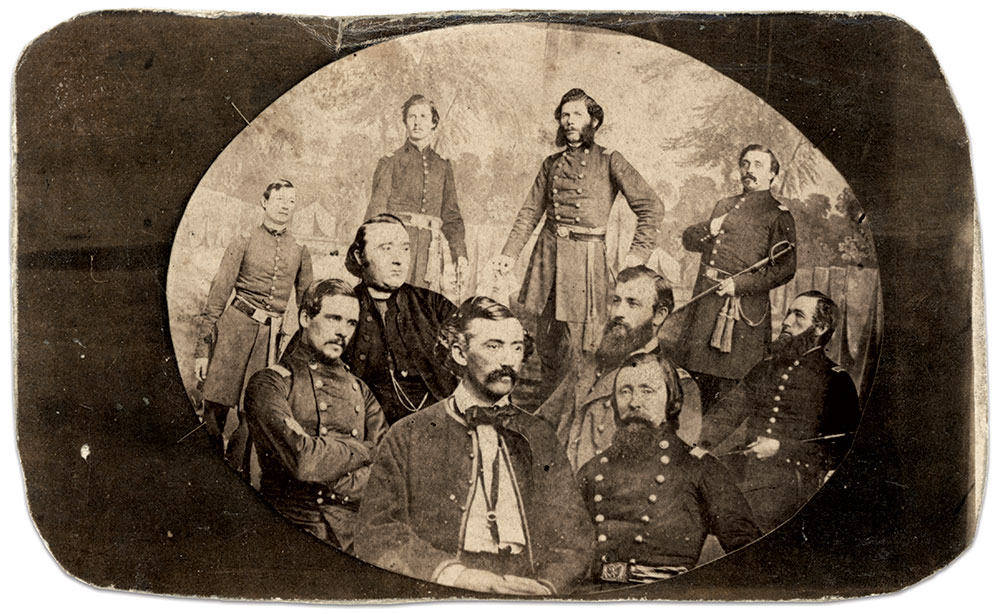
This composite of 23rd Illinois Infantry officers is uncommonly artful. Each portrait is sized and arranged to create dimension and placed against a painted background featuring a camp scene. The prominent mustachioed soldier is Col. James Adelbert Mulligan, a New York born son of Irish immigrants, and an attorney who organized the 23rd as the “First Irish Regiment” in 1861. Mulligan suffered a mortal wound and fell into enemy hands at the Second Battle of Kernstown in July 1864. He was 34. The clean-shaven man in the dark coat behind him is the regiment’s chaplain, Thaddeus Joseph Butler, a son of Ireland and Catholic priest. He survived the war and went on to be elected a bishop in the church only to die in Rome before his ordination.
A Shadow of Itself

This view of the 17th Illinois Infantry, taken at Vicksburg in the spring of 1864 towards the end of its three-year enlistment, visualizes under strength regiments later in the war. The number of Illinoisans present, about 217, is a shadow of the thousand or so souls who mustered at Peoria in May 1861. Losses by disease took a toll, as did combat losses, including 130 casualties at Shiloh.
From Guard to Trooper
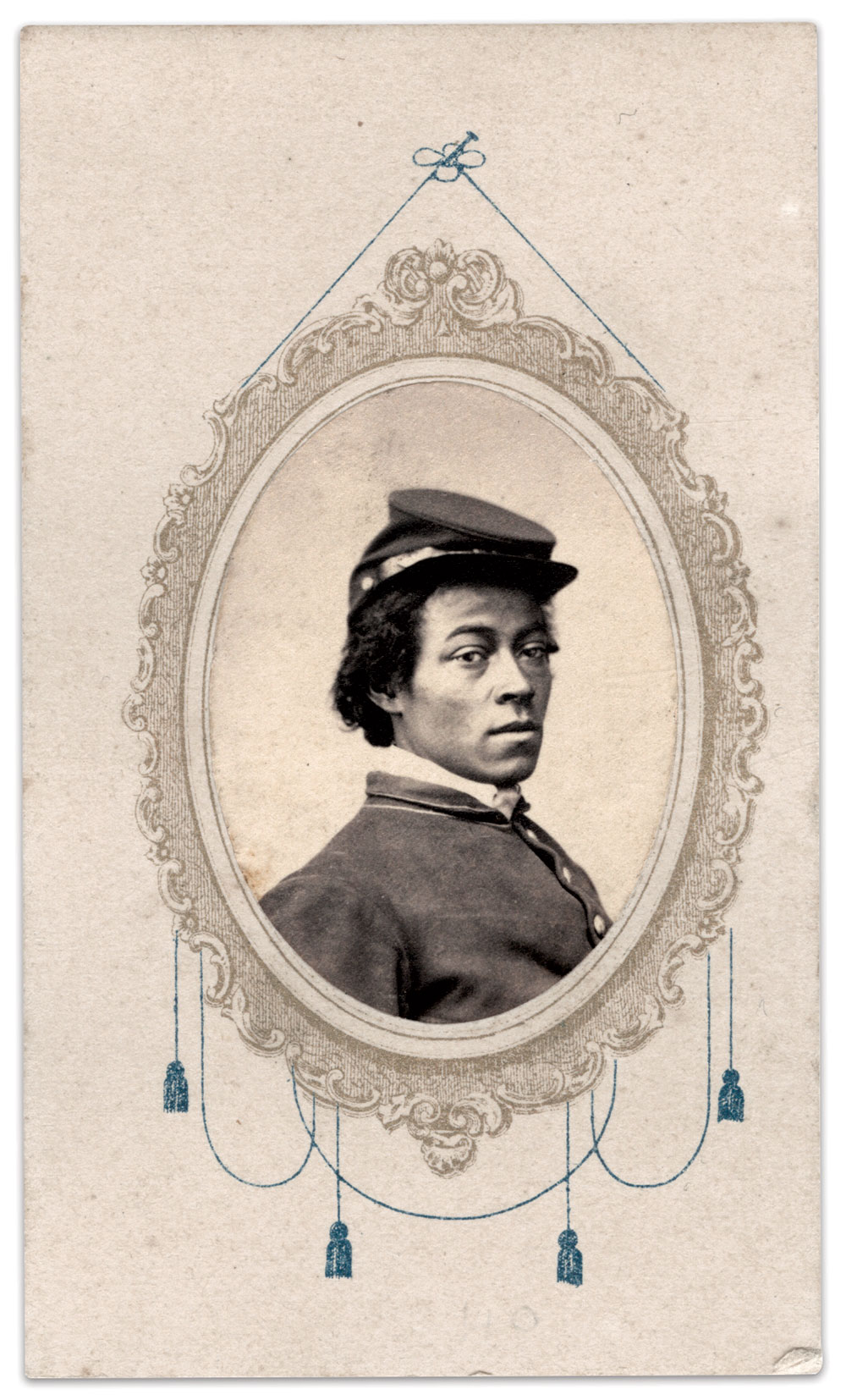
Yale University.
In the fall of 1864, recruiters for the 108th U.S. Colored Infantry signed a dozen men from Moline, Ill., to a three-year enlistment. One of the volunteers, Solomon Starks, had escaped slavery in Kentucky after the war began, and settled in Moline. He and the other recruits spent the rest of the war guarding Confederate prisoners of war at nearby Rock Island. In May 1865, the 108th transferred to the Department of Mississippi and mustered out of the army at Vicksburg in March 1866. Starks returned to Kentucky and rejoined the army in 1867 as a trooper in the 9th U.S. Cavalry. Sent to Fort Davis in southwest Texas, he contracted dysentery and succumbed to it before the end of the year. Buried on the fort grounds, his remains were later removed to the national cemetery at San Antonio.
“Patriotism Has No Sex”
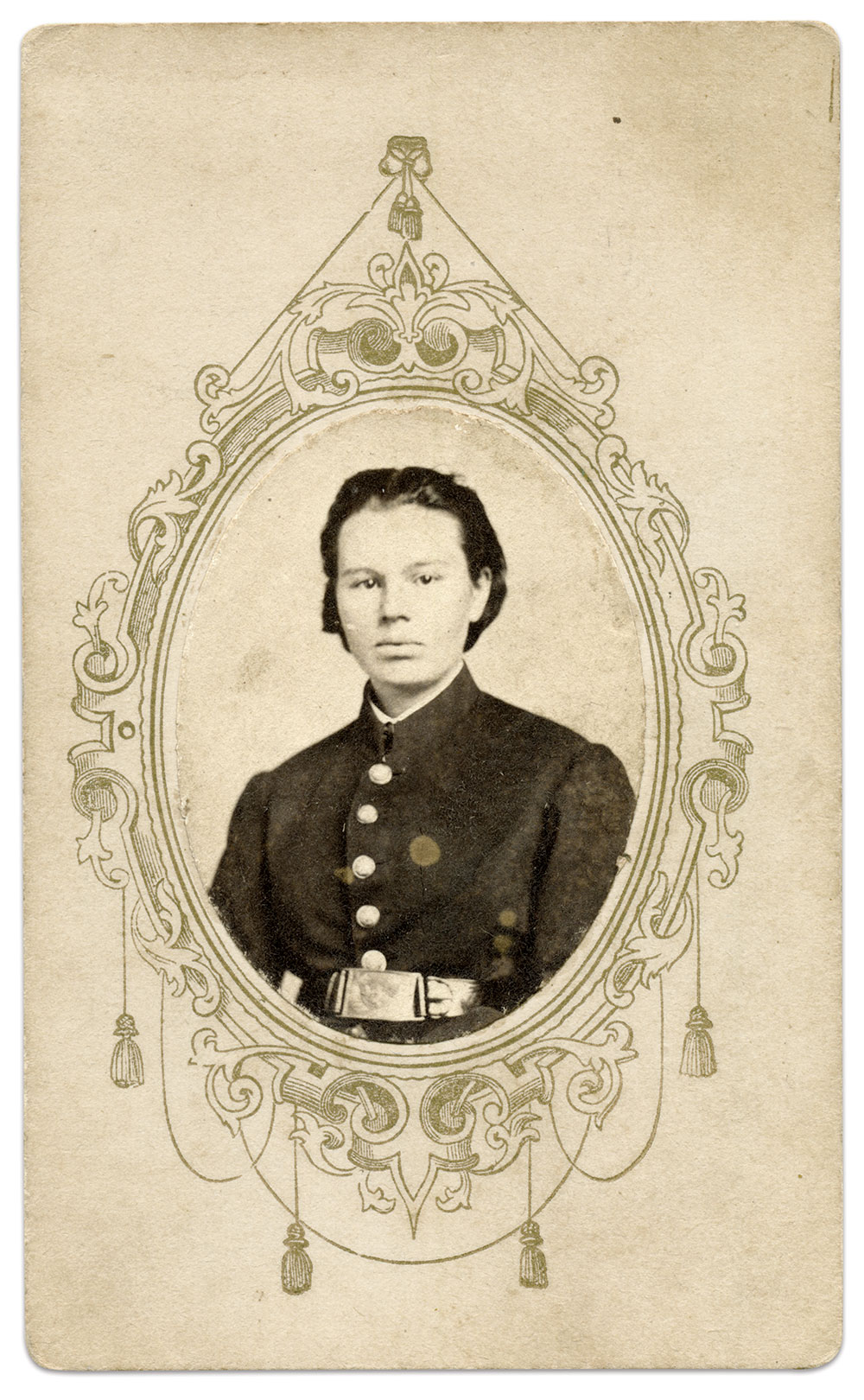
The story told by Frances Hooks about her service in several Illinois regiments lacks supporting records. Perhaps more interesting than her narrative is when and how it entered the American memory. It went viral in the Northern media in March and April 1864, at the outset of the spring campaign. Hooks’ adventures in uniform bolstered a war weary public. An unlikely source added credence to Hooks’ claims: prominent abolitionist and equal rights proponent Dr. Mary E. Walker. According to one report, Walker examined Hooks and used her name to advance the women’s movement. “Doctor W. Is well-versed in human nature, as well as anatomy, and she believes that justice to the young woman in question requires that she should be commissioned a Lieutenant in the army. The Doctor also argues that Congress should assign women to duty in the army, with compensation, as well as colored men, averring that patriotism has no sex.”
Hook’s story quickly faded. Since then, it has periodically surfaced as an example of the patriotism of women in war and, in recent decades, in gender studies. Hooks died in 1908 at about age 61. She remains an enigma.
A Miracle after Jonesville
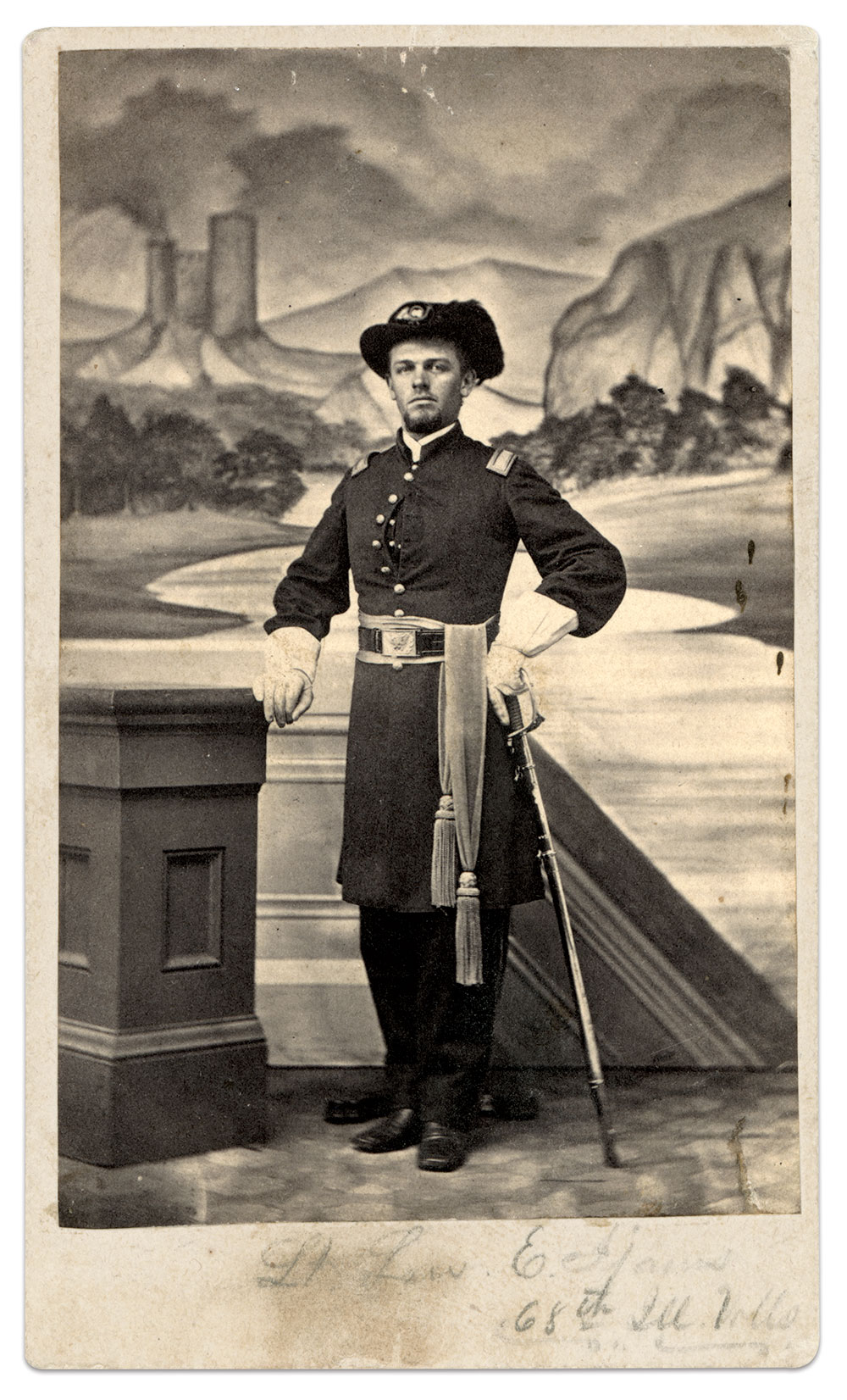
Following an uneventful 1862 stint in Virginia with the 68th Illinois Infantry, a three-months’ regiment, 2nd Lt. Lewis Ellington Ijams rejoined the army. This time, “Lew” enlisted as a sergeant in the 16th Illinois Cavalry—and it almost cost him his life. On Jan. 2, 1864, Ijams was part of a detachment of about 400 troops that drove rebel cavalry out of Jonesville, Va., and occupied it. The next day, the Confederates retook the town and captured the entire Union force after a 10-hour contest in frigid weather. Somewhere in the melee, a bullet tore into Ijams’ navel, perforating intestine and shattering a hipbone before exiting near his spine. Miraculously, he survived and escaped the hospital where he recuperated. After a long trek with other escapees through hostile territory, he made it to federal lines and rejoined his regiment. He went on to command his company as captain and mustered out in August 1865. He lived until age 78, dying in 1919. He left behind his wife, Salina.
The Enemy Within
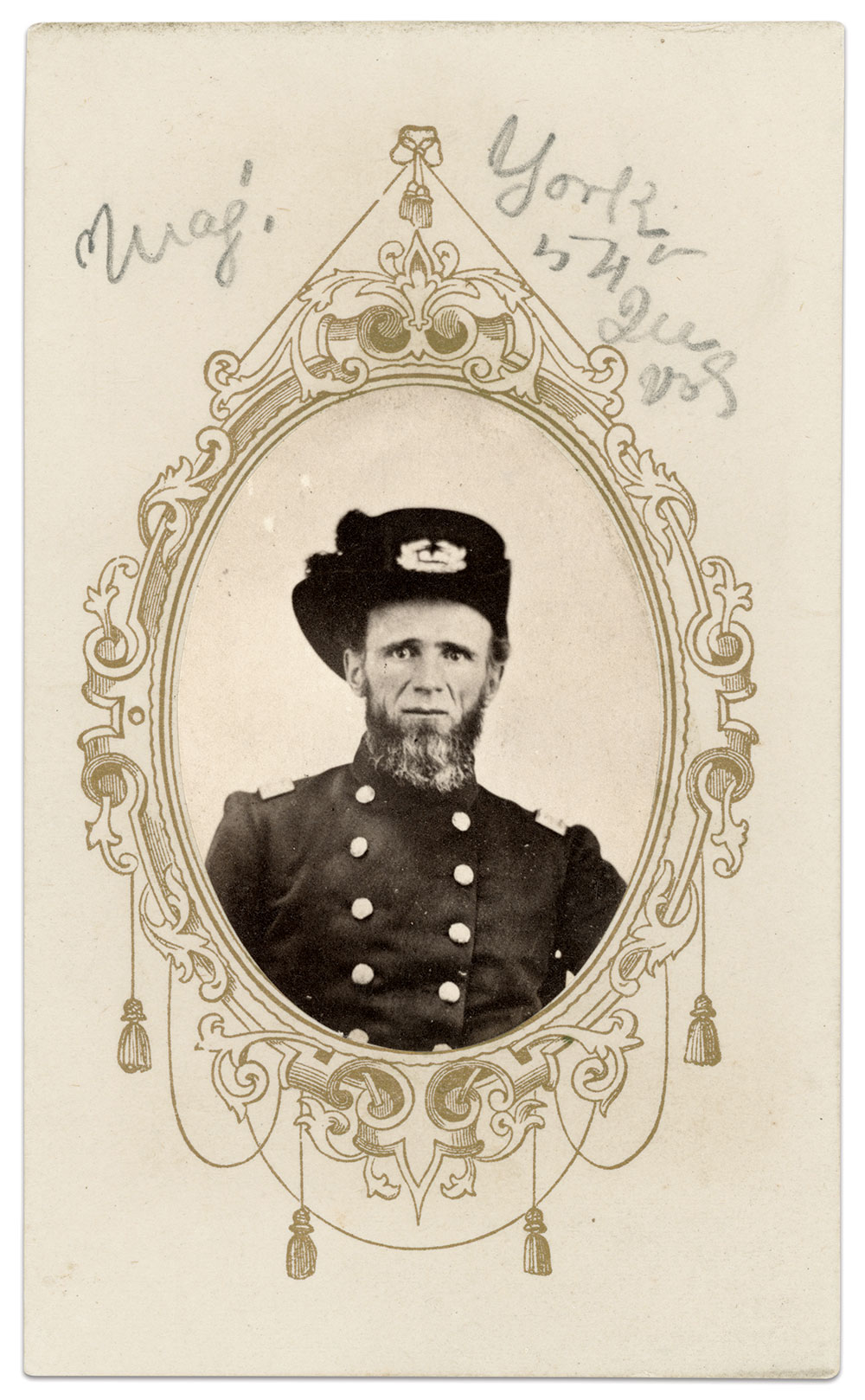
On March 28, 1864, in the heart of Illinois, gunfire erupted between Copperheads and U.S. forces at the Coles County courthouse and adjacent square in Charleston, Ill. When the smoke cleared, 21 were killed and wounded. The dead included Maj. Shubal York, the surgeon of the 54th Illinois Infantry. He and his comrades were at the end of their veteran’s furlough and preparing to head south when the violence unfolded. Meanwhile, Copperheads became agitated due to local harassment and a belief that they would be denied the right to vote in upcoming election. York, 47, a North Carolina native who moved to Illinois before the war, was shot in the back. He may have been targeted for assassination. A staunch abolitionist and Republican, he was rumored to be considering a run for U.S. Congress. His son, Milton, who served in the 66th Illinois Infantry, had shot and killed a Copperhead weeks earlier.
“Just in Off a Hard Campaign”
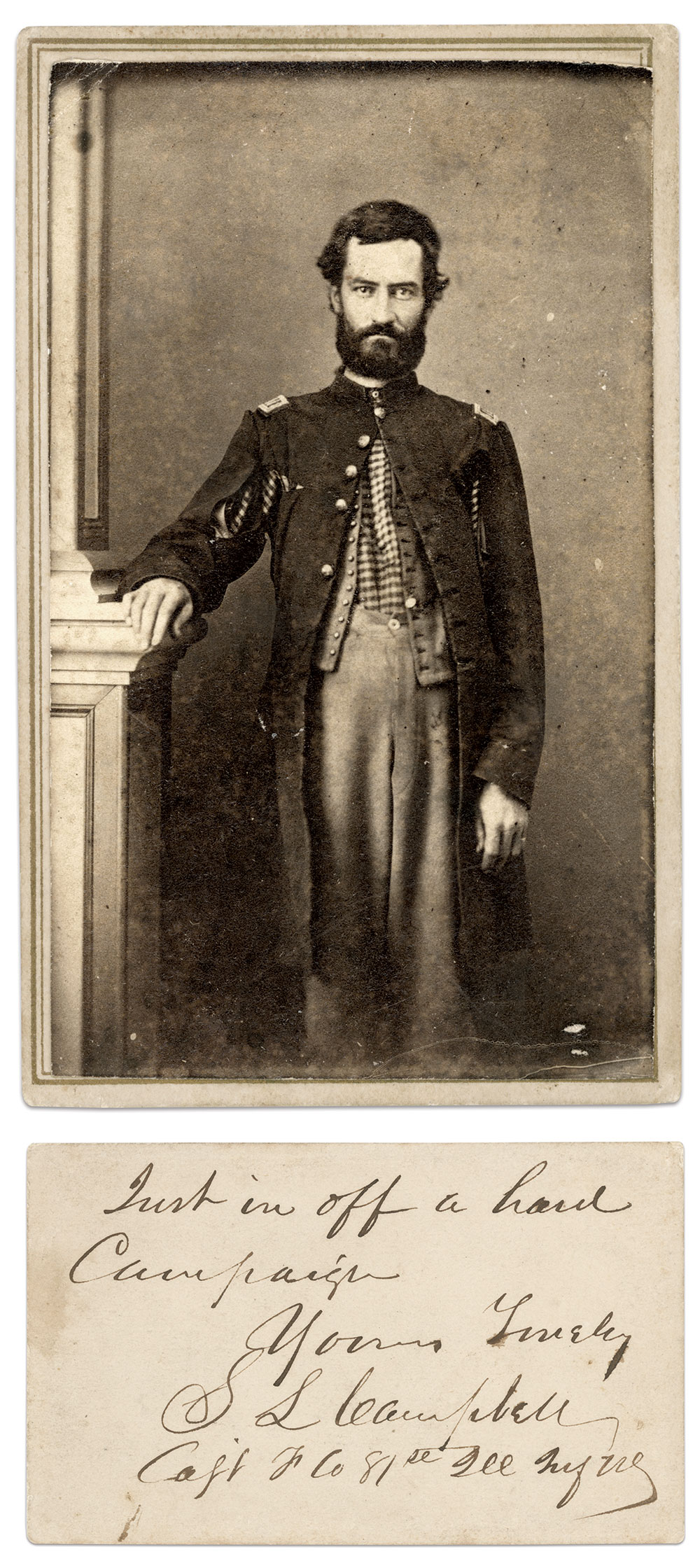
These words, inscribed on the back of this portrait, explain the torn coat worn by Capt. Samuel L. Campbell, who commanded Company F of the 81st Illinois Infantry. Campbell, a resident of Carbondale and native of Indiana, did not note a date or other specifics in his inscription. The 81st participated in numerous campaigns, including Vicksburg and the Red River, and expeditions in Alabama, Arkansas and Tennessee. Campbell survived it all, mustered out of the regiment in August 1865, and returned to his wife, Fannie, and a young son. By 1870 they had added a daughter to the family and relocated to Cincinnati, Ohio, where Campbell worked in the railroad business. He died in 1890 at about age 60. He outlived his wife and his two children survived him.
Gunboat No. 15 at Fort Pillow
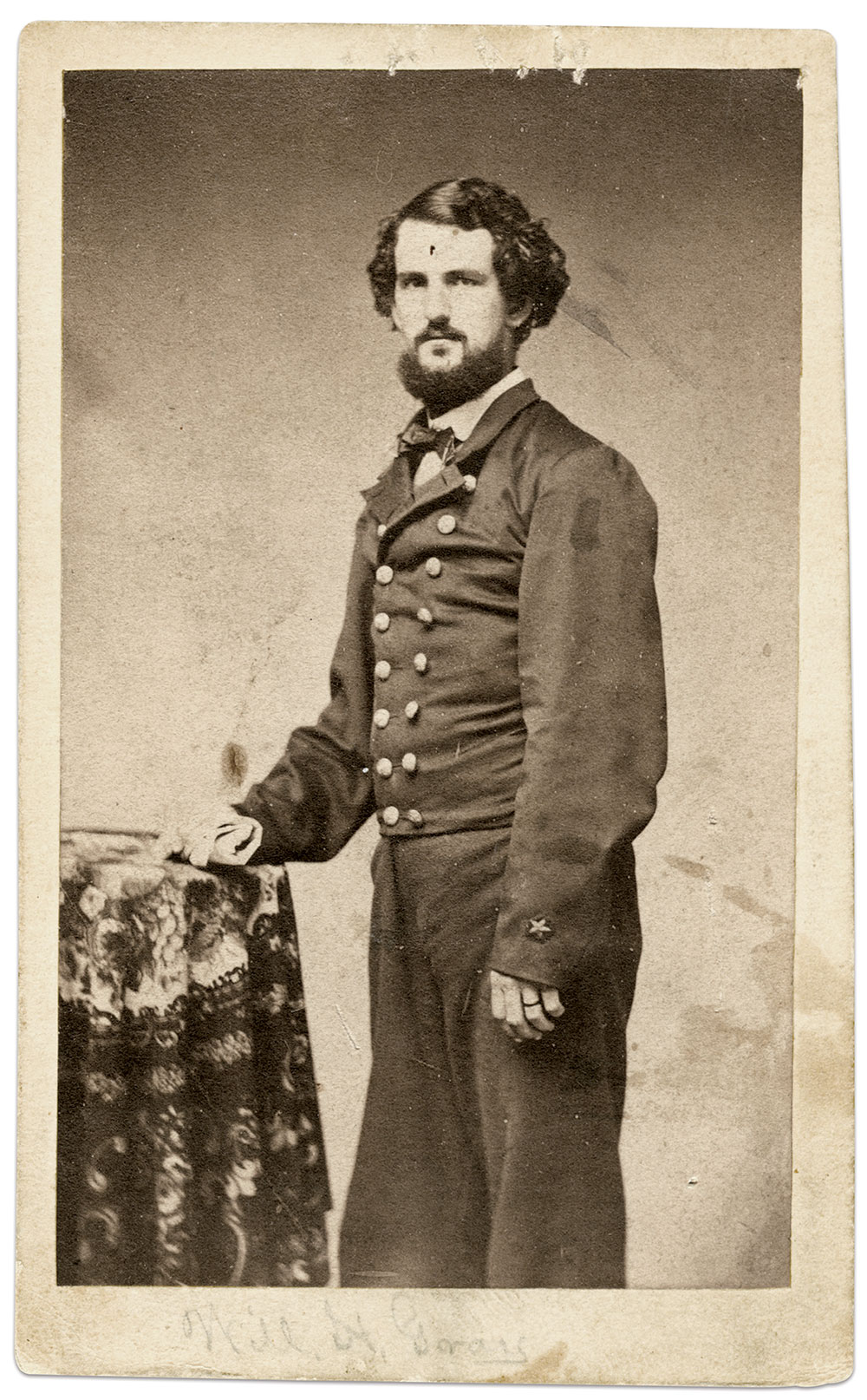
On April 13, 1864, Gunboat No. 15 received orders to assist the garrison of Fort Pillow after Confederates attacked it. The crew included Master’s Mate Will Gray of Peoria, a son of Irish immigrants. He started the war in the 8th Illinois Infantry and left with a disability discharge after two months’ service. He returned to the military in 1863 aboard the Hastings, a light-draft steamer known as Gunboat No. 15. A year later along the Mississippi River at Fort Pillow, No. 15 fired shells and drove off lingering Confederates and then sent a landing party to investigate. Gray and his crewmates observed the aftermath of the massacre of the garrison, including charred and mutilated bodies of Union soldiers. Gray left behind no record of his observations. He mustered out of the navy in June 1865 and settled in Chicago, where he died of smallpox in 1882 at age 39. His wife and two children survived him.
A Rebel Sharpshooter’s Unintended Victim
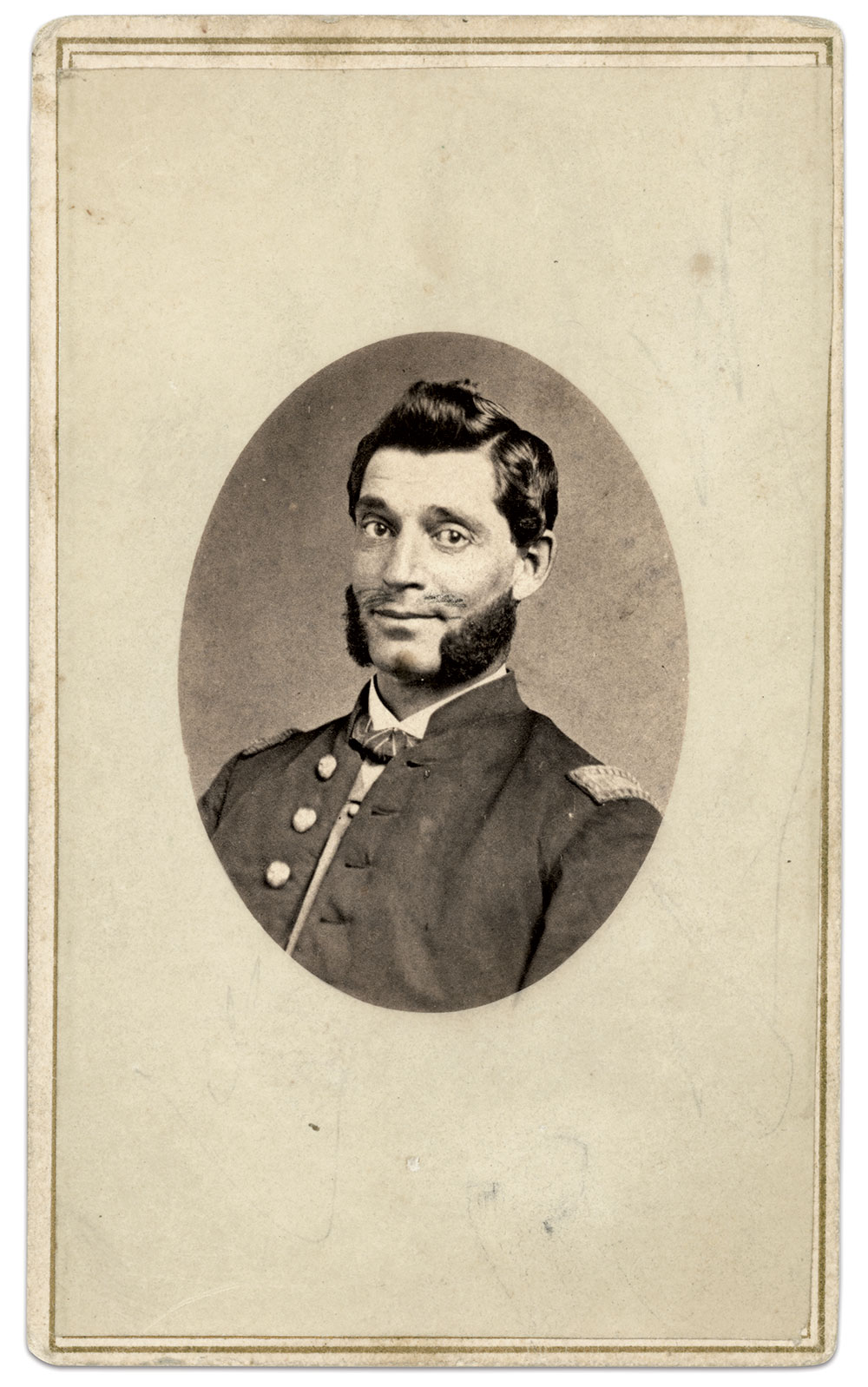
unidentified photographer. Robert Ferro Collection.
On the front lines before Atlanta, rebel sharpshooters made even the simplest task a matter of life and death. A case in point occurred during the evening of Aug. 16, 1864, along a section of the Union lines occupied by the 105th Illinois Infantry. The captain of Company E, Martin Van Buren Allen, 31, advanced under cover of a skirmish line with orders to inspect fortifications. Their movements attracted the attention of alert sharpshooters who fired with deadly accuracy: A number of skirmishers suffered mortal wounds and Allen received a gunshot in his right arm near the shoulder. Born in New York and raised in Shabbona, Ill., Allen left behind his wife, Jane, and several young children after he accepted a first lieutenant’s commission in the 105th in late 1862. He soon advanced to captain. Following his wounding at Atlanta, medical personnel transferred him to a hospital in Chattanooga, Tenn., for treatment. Surgeons removed three inches of bone and avoided an amputation. Wife Jane journeyed from Shabbona to nurse her injured husband. While doing so, she fell ill with fever and died on Sept. 25, 1864—two weeks shy of her 28th birthday. Her death could be considered the rebel sharpshooter’s unintended victim.
Allen recovered from his wound and remarried in 1867. He lived a quiet life as a farmer, his capacity for labor limited by his injury. Payments from a government pension helped support his family until he died from diabetes in 1899 at age 66.
“Fair Fame and High Standing of Illinois Soldiers”
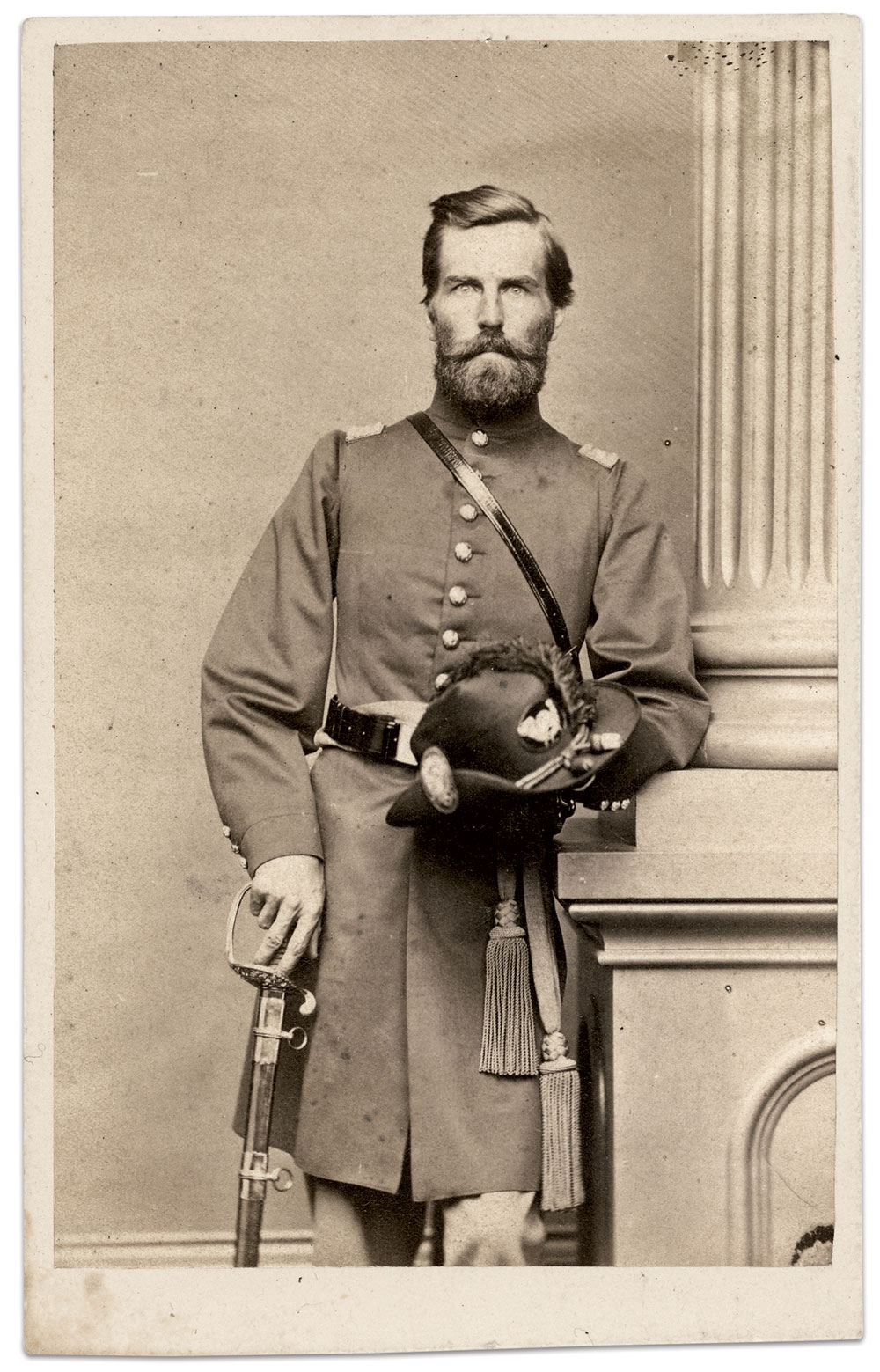
In early June 1864, Col. John Armstrong Bross wrote with excitement at the prospect of leaving the Defenses of Washington, D.C., for campaigning in Virginia: “In a few days we shall be with Grant on the Pamunkey, and ready to lend a helping hand. We are all resolved to do our duty, and maintain the fair fame and high standing of Illinois soldiers.” The “we” to whom he referred were the volunteers of the 29th U.S. Colored Infantry, a newly formed regiment composed of Illinois men of African descent. Bross, 38, a Pennsylvania native and Chicago attorney, started the war as a captain in the 88th Illinois Infantry. He left the regiment to raise the 29th.
On July 30, 1864, Bross led his Illinoisans into the thick of the action at the Battle of the Crater. He did not make it out. Efforts to recover his body failed. Words he had uttered when recruiting the 29th proved eerily accurate: “If it is the will of Providence that I do not return, I ask no nobler epitaph than that I fell for my country at the head of this black and blue regiment.”
Sherman’s Surgeon
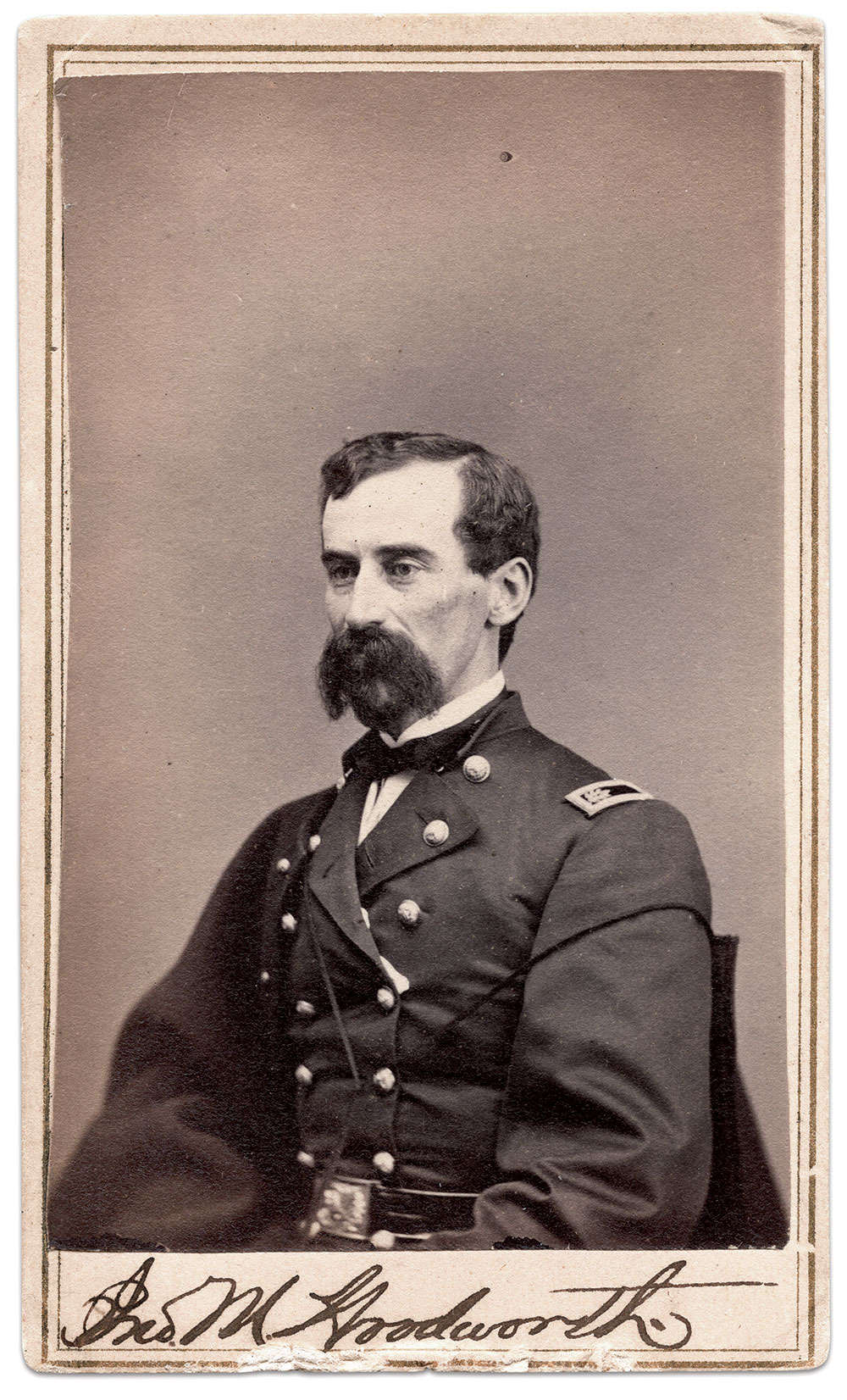
During operations with Maj. Gen. William T. Sherman’s army, Surg. John Maynard Woodworth proved invaluable in his work with field hospitals and ambulance trains. Born in New York, Woodworth moved to Chicago in his youth and was on track to become a Smithsonian Institution naturalist when the war came. Commissioned assistant surgeon in the 1st Illinois Light Artillery, he became the post surgeon at Camp Douglas before playing a larger leadership role with Sherman’s army. After the war, he resumed his career in Chicago. In 1871, he became the nation’s first Surgeon General and made significant contributions to medicine. In 1879, he fell ill with pneumonia attributed to overwork and succumbed to its effects at age 41. Mourners at his funeral in Washington, D.C., included President and former Civil War general Rutherford B. Hayes, and General of the Army William T. Sherman.
The Piano
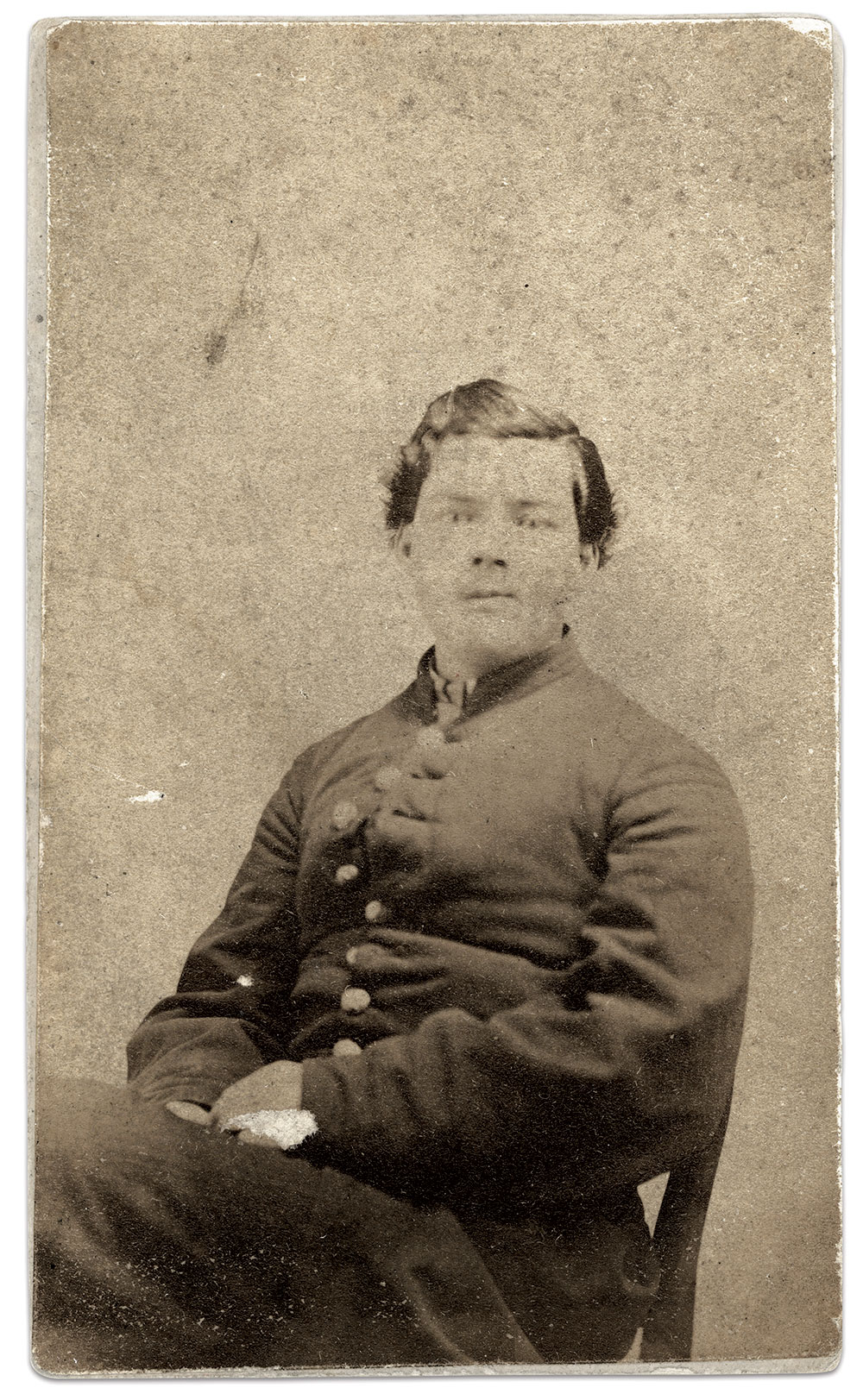
Towards the end of the war, near Raleigh, N.C., the 55th Illinois Infantry occupied the home of a Confederate guerilla commander named Burrows. His indignant wife and daughters hurled insults at the intruders, calling them “ignorant” and “savages.” One of the Yankees, his face puckered with a scar from mouth to ear and with long unkempt hair, reacted in an unexpected way. He took a seat at the family piano and played it beautifully. The surprised women came away with a new view of the invaders.
The scarred soldier is picture here. George Blahs, a German immigrant in the ranks of Company I, had suffered a gunshot across the left side of his face at Shiloh. Blahs mustered out with the regiment in the summer of 1865 and disappeared into the mists of time.
1865
Celebrated Musician
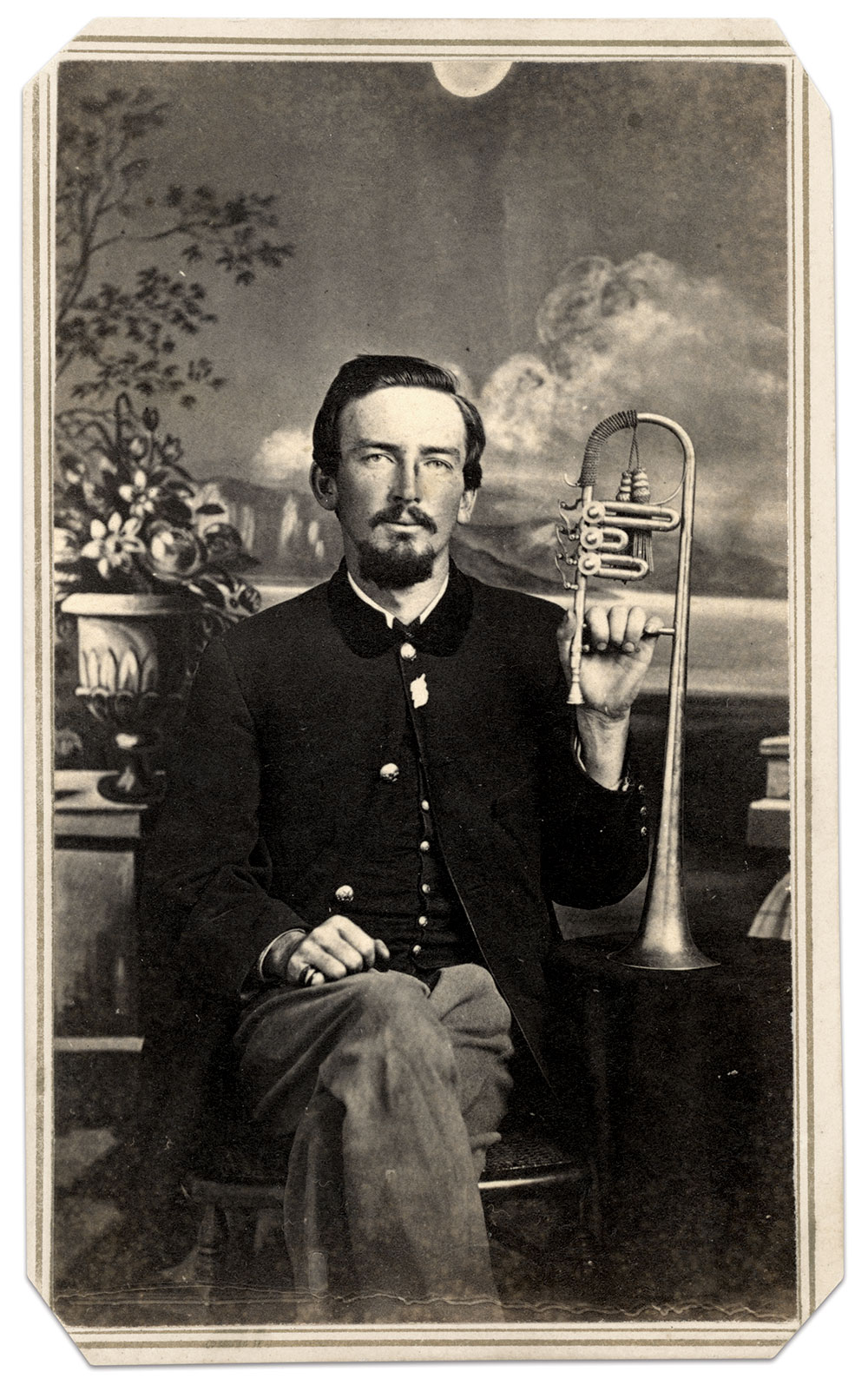
When Leman Hill Wiley traded his blacksmith’s tools for a saxhorn and band membership in the 77th Illinois Infantry, he could not have imagined his future. After mustering out of the regiment in 1865, he opened a music store in Peoria and went on to play cornet and bugle with popular bands at gigs in major cities in Europe and the U.S. He performed at the inauguration of President James Garfield and William McKinley’s successful 1896 campaign. Along the way, he served a 16-year stint as doorkeeper of the U.S. Senate in Washington, D.C. Known for his suave manner, friends and fans mourned his passing in Peoria in 1912 at about age 67.
Mourning Lincoln
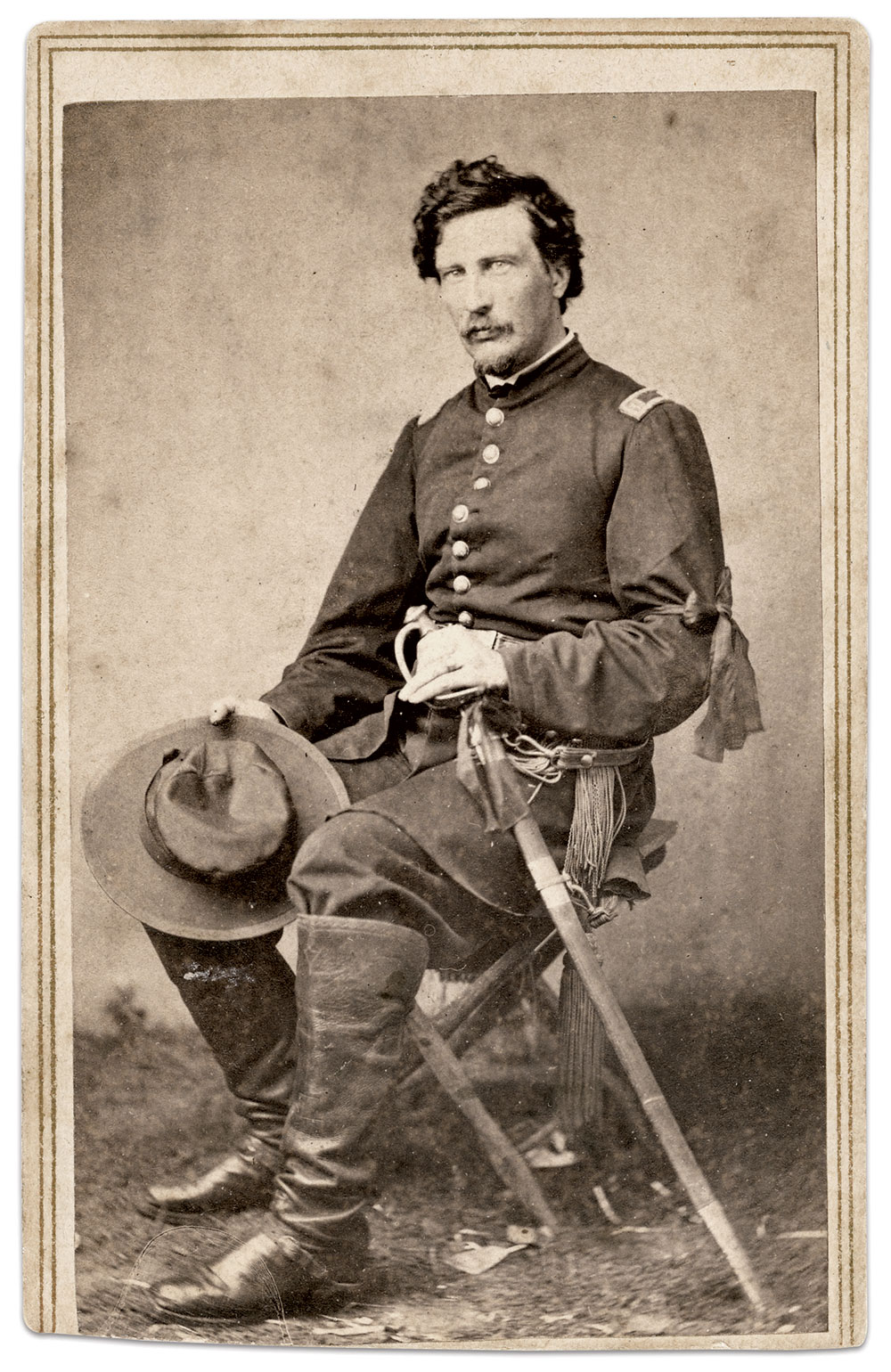
Captain James S. Boyd of the 51st Illinois Infantry wears black crepe wrapped around his arm and sword in honor of the late President Lincoln. Boyd, a British immigrant who called Chicago home, had spent the last three years fighting at Stones River, Chickamauga, Missionary Ridge, Franklin and elsewhere. A few months after Lincoln’s assassination, Boyd became major and advanced to lieutenant colonel by the time he received his discharge in late 1865. He barely outlived the war, dying in 1870 at about age 34. His wife, Helen, survived him.
SPREAD THE WORD: We encourage you to share this story on social media and elsewhere to educate and raise awareness. If you wish to use any image on this page for another purpose, please request permission.
LEARN MORE about Military Images, America’s only magazine dedicated to showcasing, interpreting and preserving Civil War portrait photography.
VISIT OUR STORE to subscribe, renew a subscription, and more.

